|
Sharing these before and after photos today of this high/low horse. Left is before, right after. Above is before, below after.
What is high/low? - High/low is where one front hoof has a steeper angle than the other front hoof. The steeper hoof is the "high" hoof and the less steep one is the "low" hoof. Either one of these hooves could be the correct one; it depends on what caused the difference in the first place. Why is high/low a problem? - In the front hooves, the height of the hoof capsule directly impacts the height of the scapula and the arc of the stride of the leg in movement. A high-angled hoof will have a shorter stride, and the scapula will be sitting higher up than the opposing side. This will create an imbalance for saddle fit, with the rider often complaining that they lean to the side with the shorter hoof. This also presents a problem with symmetry riding one direction vs the other because the stride lengths will be different, and it can create a canter lead problem as well with the horse struggling to take the lead on the higher side. Not to mention, the horse will be uncomfortable and feel imbalanced in their body. They might even feel pinched in the shoulder under saddle on the higher side. What causes it? - There are a lot of reasons for high/low to show up. The most common cause I see is what we call a grazing foot. This is where a foal prefers to graze with one hoof forward and one hoof back, and they are always in the same position, i.e., the front left is always forward and the front right is always back. With proper trimming, the hooves can be maintained in balance, but with improper trimming, the hooves will develop differently, with the outstretched front hoof becoming low and the other growing in at a higher angle. A coffin bone does not finish growing until a horse is 3-4 years old, so proper trimming is crucial from about 3 months old to keep the hooves in balance and to prevent asymmetry. Another cause of high/low is a club foot. While this is not a true case of high/low, but rather the pathology of a club foot, it often presents with the same implications and must be managed as a high/low scenario. It is very common for clubbed hooves to be trimmed ineffectively and allowed to flare so that they appear more "normal," and unfortunately, this exacerbates the problem. Previous injury, conformational faults, or muscle weakness can also cause high/low as they can cause a horse to be stronger or more flexible on one side of the body than the other. This imbalance in the body will directly impact the weight distribution going down the legs and can create more pressure on one side than the other, which can also alter the shape of the hooves. How do we fix it? Can we? - "Fix" isn't really the correct word as it implies we can completely remedy the problem, but can we improve high/low? The answer is most of the time it can be improved to some degree with a combination of correct trimming, bodywork, and physical rehab for the horse. In the case of the horse pictured here, he needed a more effective trim to control the flaring hoof wall, proper management of his club foot, and he needed the heels on the low foot left alone and the heels on the high foot trimmed as low as possible but without thinning the sole, and without overstretching his tendons. Heel changes need to be made gradually, not all at once, or they can be a shock to the system and cause discomfort or injury. His rehab will be a work in progress and will take time, but he is already moving better and starting to grow in connected hoof wall attachment. Interested in learning more about proper hoof care and management? Check out our online hoof care course where you can delve deeper into these topics and gain valuable insights for your horse's well-being.
0 Comments
Peripherally Loading the hoof and prolapsed frogs, the pitfalls of traditional shoeing techniques4/14/2024 The concept of peripherally loading the hoof is not really something most barefoot trimmers endorse. While this approach aims to shift weight-bearing forces away from the internal structures of the hoof, such as the digital cushion, frog, and coffin bone, it can inadvertently lead to a host of issues, including a weak digital cushion and prolapsed frogs.
Peripherally loading the hoof involves applying excessive pressure to the hoof wall, often through the use of shoes or improper trimming techniques. While the intention may be to alleviate strain on the internal structures, such as the coffin bone, navicular bone, and tendons, it can result in unintended consequences. One such consequence is the prolapse of the frog, where the frog tissue becomes compressed and displaced downward due to inadequate support and stimulation. Prolapsed frogs occur when the frog tissue, which plays a crucial role in weight distribution and shock absorption, becomes weakened and fails to maintain its proper position elevated up within the hoof capsule. This can lead to discomfort, lameness, and compromised hoof function. These horses will be very sensitive in the back of the hoof and can land toe first instead of heel first, and suffer from caudal failure if left untreated. Rehabilitating a hoof with prolapsed frogs requires a multifaceted approach that addresses both the underlying causes and the structural integrity of the hoof. Central to this approach is the careful stimulation and rebuilding of the digital cushion and frog tissue. By focusing on these essential components, we can help restore proper hoof function and mitigate the risk of further damage. First treat the frog for thrush, as the protecting structure for the digital cushion the frog needs to be the priority. Second, carefully bring the frog into a weight bearing state either barefoot, with boots and pads or with the use of soft hoof packing and composite shoes with frog support. The digital cushion serves as a critical shock absorber, dissipating the impact forces generated during movement. When peripherally loading the hoof, this vital structure may become underutilized and weakened. To counteract this, it's essential to implement strategies that encourage the development and strength of the digital cushion. This can include exercises that promote natural movement and weight-bearing, as well as proper trimming techniques that support healthy hoof function. Often the horse will learn to land toe first because of pain in the back of the hoof, but even as you remove those sources of pain the muscle memory will keep the horse landing toe first unless you also rehabilitate the body with postural changes and bodywork. Ultimately, the rehabilitation of prolapsed frogs is not just about restoring hoof health—it's about safeguarding the overall well-being of the horse. By prioritizing the stimulation and development of the digital cushion and frog tissue, we can help dissipate impact energy, protect the horse's joints and body, improve and restore correct biomechanics and promote long-term soundness and comfort. Understanding the Difference between Laminitis and Founder In the horse world, Laminitis and Founder are often used interchangeably, but they actually mean different things. Let's break it down: Laminitis = Inflammation of the Lamina Laminitis happens when the sensitive lamina around the coffin bone gets inflamed. This includes the sensitive lamina on the front and sides of the coffin bone, as well as the solar corium on the bottom of the coffin bone. Founder = Coffin Bone Rotation Founder occurs when the coffin bone rotates or sinks within the hoof capsule. It can be a small or big rotation, but either way, it's considered foundered. Think of it like being pregnant – you either are or you aren't. Once that hoof wall connection is gone, it has to be regrown from the top down, a long process of about 8 -12 months. It's important to know that a horse can have laminitis without getting founder, and a horse can get founder without experiencing laminitis. While they often go together, it's not a strict rule. Some horses with laminitis progress to founder, but not always. Founder can also happen on it's own, over time due to too long in between trims or improper trimming - this is called mechanical founder. These horses might not show laminitis signs but may seem sore, stiff, or unsound. The great news is most cases of laminitis or founder can be healed. It's a challenging journey, but with a knowledgeable trimmer or farrier, along with some changes to the horse's diet and living conditions, recovery is possible! Understanding Founder and Hoof Healing Founder is a serious condition involving the rotation and potential sinking of the coffin bone within the hoof capsule. It can range from a slight rotation to a severe scenario where the coffin bone penetrates the sole and emerges at the bottom of the hoof. Although the goal is to avoid such extremes, the reality is that founder is a common issue observed in trimming practices. In a foundered hoof, the wall at the coronary band initially displays a healthy angle, even if only for a short distance. As it descends, there is a sudden change in angle, and the wall flares forward. Skilled trimmers and farriers can identify founder, but the degree of rotation requires diagnosis through X-rays by a veterinarian. Sometimes, a hoof wall may flare but not be foundered, this is characterized by a less abrupt angle change and often involves multiple deviations in angle. A flare is simply a stretching of the lamina, while founder is actual disconnection of the lamina. While prompt veterinary attention is crucial during a laminitic event, X-rays are equally important for foundered horses. Collaborating closely with your farrier/trimmer is essential to determine the rotation severity and trim the hoof correctly for pain relief and healthy growth. Though serious, founder is often treatable. A knowledgeable trimmer/farrier is vital, understanding the hoof condition and trimming to alleviate rotation, fostering the growth of a healthy, well-connected hoof wall from the coronary band down. Rehabilitation duration varies, spanning 8-12 months depending on severity and individual hoof growth rates. The key to a successful rehabilitation is maintaining a short toe and reducing leverage on the fragile new growth, preventing excess length that could leverage the lamina apart. A short trimming schedule, typically every 2-4 weeks based on severity, is crucial. I routinely employ this approach in rehabilitating foundered horses, and I often use glue on shoes to provide comfort and soundness during the rehabilitation process. Understanding Laminitis: A Comprehensive Insight into its Impact on Horses Laminitis is a complex condition characterized by inflammation of the sensitive lamina enveloping the coffin bone. This intricate structure involves the sensitive lamina along the front and sides of the coffin bone, as well as the solar corium beneath the bone. The sensitive lamina is a vascular layer covering the coffin bone, equipped with nerves and a blood supply. It intricately intertwines with the insensitive lamina, positioned on the inner side of the hoof wall. Unlike its counterpart, the insensitive lamina lacks a blood supply and nerves, yet its semi-rigid structure provides essential support. The interlocking connection of the sensitive and insensitive lamina acts like Velcro, crucial for maintaining the proper position of the coffin bone within the hoof. When a horse experiences laminitis, the sensitive lamina becomes swollen and inflamed. This inflammation is profoundly painful as there is limited room for expansion between the interlocked insensitive lamina. The severity of laminitis varies; a horse with mild laminitis may exhibit sensitivity when walking on hard surfaces, while severe cases may result in a distinct rocked-back stance as the horse seeks relief from inflamed lamina pressure. Swiftly reducing inflammation and relieving hoof wall pressure through trimming by a knowledgeable trimmer or farrier can often prevent the progression to founder. If left unaddressed in severe cases, the persistent pressure may lead to lamina separation, allowing the coffin bone to rotate and sink within the hoof capsule. It's crucial to emphasize that this progression is not an overnight occurrence but develops gradually, underscoring the urgency of prompt intervention to alleviate inflammation. Laminitis can be triggered by many factors, with carbohydrate overload from lush grass or sudden grain intake being the most common. Other triggers include hormonal imbalances, stress, metabolic issues, systemic conditions, and even improper trimming or repeated concussions on hard surfaces. If you suspect your horse has laminitis, call your vet ASAP, if left untreated it can lead to serious complications. Unraveling Acute Founder: Debunking the Myth In our recent posts about Laminitis and Founder, we've explored the differences and subtleties of these equine hoof conditions. Now, let's delve into the intriguing but incorrect concept of "Acute Founder." Acute Founder, often described as a rapid event - akin to an overnight occurrence, is commonly known (incorrectly) in equestrian circles. However, it's essential to clarify – this phenomenon does not truly exist. In the equestrian world, it's not uncommon for horses to undergo gradual, unnoticed founder over an extended period - this is called mechanical founder. Despite regular hoof inspections, the lack of comprehensive knowledge sometimes leads horse owners, farriers, trimmers, and even veterinarians to overlook the subtle signs of founder. This knowledge gap can be disconcerting, underscoring the need for ongoing education within the professional community. Now, how does this tie in with a scenario where a horse seemingly acutely founders after a grain binge? Let's break it down. In my experience, I've encountered horses where, on the initial visit, I identified signs of founder in their hooves. Surprisingly, these horses were actively performing daily exercises and work, exhibiting no overt signs of soreness or discomfort. Often times the horse owner doesn't understand how anything could be wrong, and chooses to disregard this information. However, dismissing this situation with an "if it ain't broke, don't fix it" mentality is a perilous choice. The consequences of neglecting this metaphorical "ticking time bomb" are substantial. The horse continues its routine, seemingly unaffected, until a day of grain indulgence/hormonal imbalance or some other laminitis trigger, rendering the horse acutely laminitic and unable to walk. When the vet is called, the horse owner, citing the horse's soundness the day before, leads to a common misdiagnosis - Acute Founder. The assumption is that founder occurred overnight due to the laminitis event, when, in reality, it had been quietly progressing for an extended period of time. Similar situations arise, such as a horse progressing well until it develops tenderness in a front hoof. When the vet is consulted, the assumption is that the founder occurred recently. These occurrences, are not rare, and they underscore the importance of understanding the timeline of founder development. While laminitis can, in some cases, lead to founder, the crucial fact is that founder does not transpire overnight. For the lamina to lose its connection and the bone to initiate rotation away from the hoof wall, a gradual process unfolds. As the lamina separate, the cells secrete a liquid form of keratin, creating a lamellar wedge that progressively enlarges over time to fill the growing void between the coffin bone and the hoof wall. As the hoof wall continues to grow, the wedge pushes the wall forward creating the extreme flare we typically associate with foundered hooves. In summary, the notion of a horse acutely foundering overnight is a myth. Founder is a gradual buildup, while laminitis, if promptly addressed, does not necessarily culminate in founder. Continuing to deepen our understanding of these intricate hoof conditions is key to promoting the well-being of our equine friends. For more information check out our
Laminitis and Founder Online Course! Aspen arrived here on Feb 14 2023. She is a 6 year old Quarter Horse that was purchased by a previous client. Aspen was professionally trained and started and the client bought her as a confidence builder. As it turned out, shortly after purchasing her Aspen started bucking quite dramatically when saddled. She was sent to a trainer who suspected the issues were pain related, and then the vet was called. The vet took radiographs of her back and legs and the diagnosis he came up with was boney growths on the suspensory branch attachment points likely caused by Degenerative Suspensory Ligament Desmitis (DSLD), an ultrasound was not done to confirm as he thought the radiographs were conclusive enough. When she arrived she was not lame, and had no visible swellings, but her owner did express she had some hind end lameness issues previously with the right hind being the worst. While I definitely don't disbelieve the vet's diagnosis, I also see a few issues that could be contributing to her condition as well as causing their own problems. I also think that you could x-ray many sound horses and find boney changes and suspensory issues that are underlying that may not be an immediate concern. My first concern with Aspen's hooves are the long toe and weak caudal hoof. I would like to see a shorter toe, a more tightly connected hoof wall and and more vertical heel. Her heels are under run and likely creating negative plantar angles on the hinds. Her frogs and digital cushions are also not as robust as they could be. From a behavioral standpoint I have only worked with Aspen twice as of this writing. The first time was to trim her, and she was quite anxious and stiff to work with. We did some groundwork and I took my time releasing when she was cooperative and trying to get as much done as I could. Below are the pics from that trim. It is not the perfect trim I would like, but it's the one we were able to get done though her anxiety. Since the trim I have worked with her again and she was much calmer, though does show a lot of anxiety through her stiff, fast movement and restrictions through her rib cage. I am excited to get to know her as she settles in here and see what unfolds for her. So far she seems sound and fairly physically capable, though a bit unbalanced and anxious. The video below the pics was shot on February 24 2023 as she ran the track system to catch up with the herd. I get asked this question often from horse owners. Let's talk Quarter Flare to start. There are two issues that can cause the quarter to flare, first is mechanical stress placed on the hoof itself, the second is metabolic stress. In a healthy hoof, the bond or interdigitation of the sensitive lamina to the insensitive lamina is tight. This connection is the white/golden line we see on the bottom of the hoof. The golden line is formed by the terminal papillae's around the rim edge of the coffin bone as they secrete a flexible type of keratin. This keratin (golden line) acts like a silicone bond between the two structures of lamina. Flexibility is key, as the insensitive lamina grows down and past the sensitive lamina that stays attached to the coffin bone itself. Because this bond must be flexible/elastic to join these two structures, it is the weakest part of the horse's hoof. This bond can be broken by mechanical stresses put on the hoof. Mechanical stress is created when the hoof is allowed to grow too long, decreasing the ability of the frog to perform its role of providing support in the rear/center of the hoof, which then causes the full weight of the horse to push down on the hoof wall (peripheral loading). The weight and loading of the hoof wall can cause a great deal of leverage on the golden line which is how the quarter flare starts. As the wall moves away or flares, the golden line must stretch to cover the increasing distance between the two laminae. If the stress continues due to a long trim cycle or improper trimming, the golden line can break down, leading to the separation of the wall from the sole. When this separation happens, the golden line expands to cover this distance (lamellar wedge). To treat quarter flare caused by mechanical stress a shorter trimming cycle should be implemented with regular maintenance trimming being performed every 2-3 weeks, allowing the frog and heels, to bear the primary impact of the footfall and not the hoof wall. Metabolic Stress is a breakdown at the cellular level of the hoof. Systemic metabolic conditions such as stress, insulin dysregulation, PPID, obesity, mineral imbalance, dietary imbalance, or infection can cause a weakness within the cells of the hoof. This breakdown can cause issues within the hooves and the ability to create and maintain the strong bond between the laminae. Signs of metabolic conditions that show up in the hoof can be slow growth, angle changes to the hoof wall, brittleness, ridges, and fine line cracks in the hoof wall. What is White Line Disease? Any weaknesses of the lamellar attachment can lead to microscopic openings for fungi and bacterial microbes to gain entry which can lead to infection. This infection can result in large cracks and chips, and separation as the golden line (the “silicone” that joins the sole and hoof wall) gets “eaten” away. As this bond weakens and if any metabolic conditions, improper trimming techniques or long trimming cycles are not addressed and corrected this can lead to the development of White Line Disease (seedy toe) in the hoof. The best defense against White Line Disease is prevention! Do not let the hoof wall peripherally load the hoof, and make sure any wall leverage is kept to a minimum with a good balanced trim and trim schedule. If you see a small cavity or separation in the golden line, make sure to first address the leverage that likely caused it, and second treat the area topically to prevent the microbes from taking over. My favorite treatment for non-invasive separation is to gently remove any debris from the area and to apply Artimud into any cracks or crevices that are present. For serious, invasive (more than a few mm of separation) cases of white line disease that are eating up into the area, I soak the hoof twice weekly with White Lightning, a liquid soaking solution first and then treat topically with Artimud for turnout. Remember, quarter flaring, separation, and white line disease are all secondary conditions that are caused by leverage or a weakness within the hoof. First, address the cause of the weakness, and you will likely resolve the secondary issues. Product Application Video - Sole Cleanse, Artimud, and Hoof Stuff Thrush is a common hoof condition in horses that affects the frog and can have serious consequences to the health of the hoof. It is caused by a fungal and/or bacterial infection and is more common during wetter weather. Thrush can create a foul-smelling chalkiness on the frog and in the collateral grooves, and can impact the shape and size of the frog. In severe cases thrush can infect the digital cushion of the hoof, this is a sensitive, shock absorbing structure in the rear of the hoof that is responsible for dissipating the impact vibrations during movement!
Here's some helpful information on the symptoms, treatment, and prevention of thrush in horse hooves: Symptoms: 1. Foul Odor: One of the most noticeable signs of thrush is a strong, unpleasant odor emanating from the frog or collateral grooves when you pick the hoof out. This odor is caused by the fungus and/or bacteria and decaying tissue. 2. Black or Gray Discharge: Thrush often leads to a black or gray, moist discharge in the central sulcus of the frog or in the deepest parts of the collateral grooves. This discharge may also be accompanied by a cottage cheese-like consistency. 3. Sensitivity and Lameness: Horses with thrush may become sensitive or lame, particularly when pressure is applied to the affected area. They may show discomfort when picking out the affected hoof and an inability to load the back of the hoof during motion - resulting in toe first landings. 4. Changes in Hoof Appearance: As thrush progresses, it can cause the frog to become soft and spongy. In severe cases, the frog may even develop deep crevices or cavities. Treatment: Treatment of thrush in horse hooves involves several steps: 1. Cleaning: Begin by cleaning the affected hoof thoroughly. Use a hoof pick to carefully remove dirt, debris, and any loose or decayed tissue from the frog. Using the Sole Cleanse product after this process helps to disinfect the frog and sole prior to packing with Artimud or Hoof Stuff. 2. Topical Treatments: Various topical treatments are available, such as Artimud, which is formulated to treat minor thrush and work as a preventative, and Hoof Stuff, which is formulated for deep central sulcus cracks. Using the Artimud product provides lasting protection against damage. It contains naturally active agents that eliminate bacteria and fungi and promote the formation of healthy tissue. It can be reapplied on a daily basis. For the deeper crevices in the central sulcus, Hoof Stuff is the best choice as it will stay in place with its cotton fibers, zinc oxide and honey base. For best results top the Hoof Stuff with Artimud! 3. Proper Trimming: Regular trimming and maintenance of the hooves are essential to prevent the accumulation of debris and provide better aeration to the frog. For more info on proper trimming and how to evaluate your horse's trim consider our Online Hoof Anatomy, Theory and Barefoot trimming Course. 4. Dry Environment: Ensure that the horse's living environment is clean, dry, and well-maintained. Mud and moisture can contribute to the development of thrush. Prevention: Preventing thrush is key to maintaining hoof health: 1. Regular Hoof Maintenance: Schedule regular hoof trims every 4 weeks with your trimmer to keep the hooves in good shape and prevent the accumulation of debris. 2. Clean and Dry Environment: Ensure that the horse's stall, paddock, and pasture are clean and free of standing water or mud. Proper drainage can help keep hooves dry. 3. Proper Nutrition: Maintain a balanced diet to promote overall hoof health. Adequate nutrition is essential for strong hooves. 4. Regular Exercise: Encourage your horse to move and exercise regularly, as this helps with blood circulation and hoof health. 5. Routine Checkups: Regularly inspect your horse's hooves for signs of thrush, especially in wet or muddy conditions. Early detection and treatment can prevent the condition from worsening. 6. Hoof Boots: Consider using hoof boots if your horse is prone to thrush or has sensitive hooves. These can help protect the hooves from moisture and debris. If you suspect your horse has thrush or if the condition persists despite your efforts, it's essential to consult with a veterinarian or farrier for a proper diagnosis and treatment plan tailored to your horse's specific needs. I had spoken on the phone to the owner of this horse prior to arriving and I was prepared to deal with a foundered horse, but I wasn't aware of the severity. This horse has been under veterinary care and was seen by the farrier every 4 weeks for the last few months. There are also underlying PPID and IR issues. This horse has been very lame for the last year. The only radiographs I had to work with were from 6 months previous. They show significant sinking and rotation, but I suspect the damage is even worse judging by the current state of the hooves. Current radiographs would be extremely helpful, but in this case they are not available. While this trim seems fairly drastic, I am sure I could have done more if I had current x-rays. This was a step in the right direction to restore function and set up the new growth for coming in. The owner purchased Easyboot Clouds to keep this horse comfortable moving forward and we plan to trim every 3 weeks to start. In the pictures above you can see the huge lamellar wedge. There is so much separation in this hoof wall. I also tried not to touch the sole at all, what I did trim on the bottom was the overlaid bars and overgrown frog. I also tried to lower the heels to realign the bottom of the coffin bone. This horse has very thick bone, and will naturally have a slightly longer heel then the average 1.25 inches because of that. From a metabolic standpoint this horse is on low sugar hay in slow feed nets placed around her paddock to increase movement, I also suggested adding biotin to her diet to help with hoof growth, and rechecking her ACTH levels to make sure her Pergolide dosage for her PPID is effective. I will update this case study with more picutres next time I see her.
|
AuthorKristi Luehr is a barefoot trimmer/farrier, author, and founder of the Okanagan School of Natural Hoof Care. She is certified by the Canadian Farrier School as well as the Oregon School of Natural Hoof Care, and also has certification in equine massage and dentistry. Her focus is to educate owners about hoof anatomy, function and proper barefoot trimming that supports and grows healthy and functional hooves specific to each horse's individual needs. She is the author of three online courses specific to hoof care and is always striving to create more educational content for students to learn from. Archives
May 2024
|



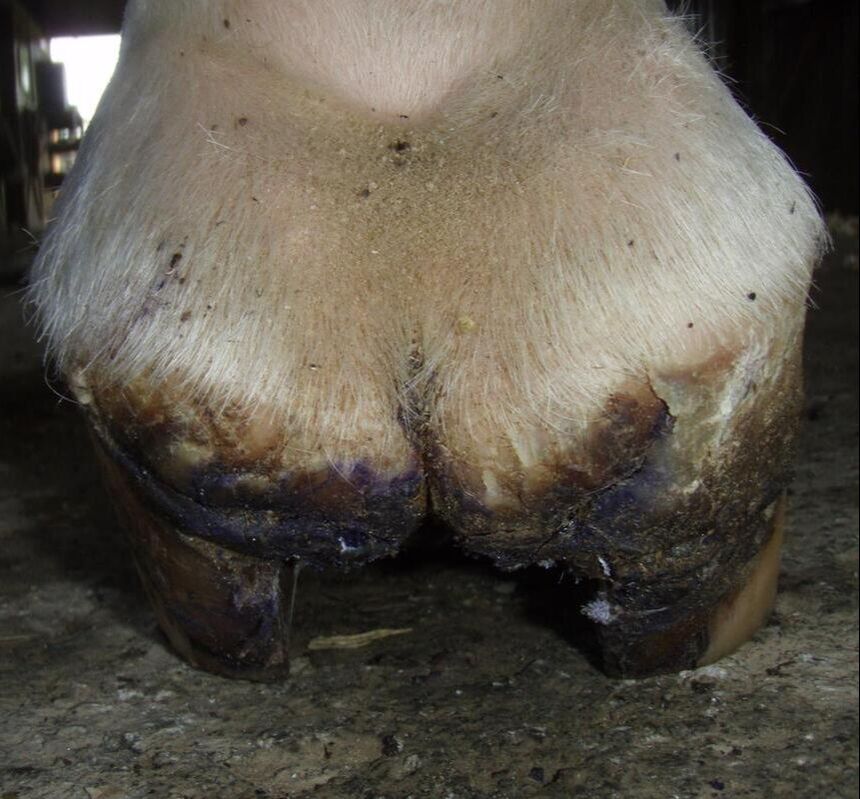
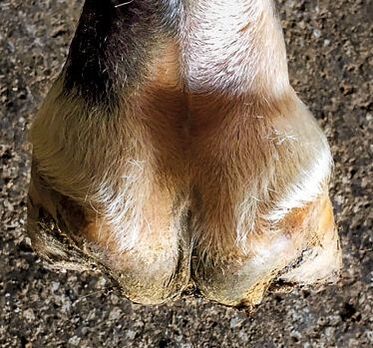
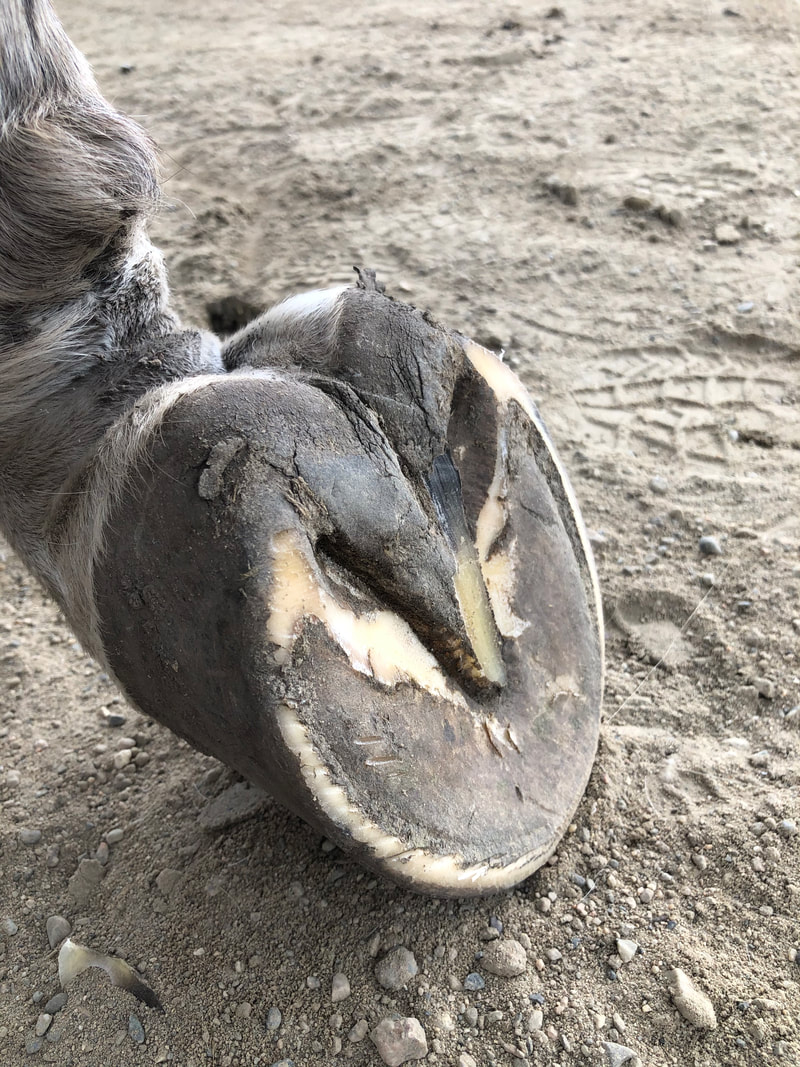
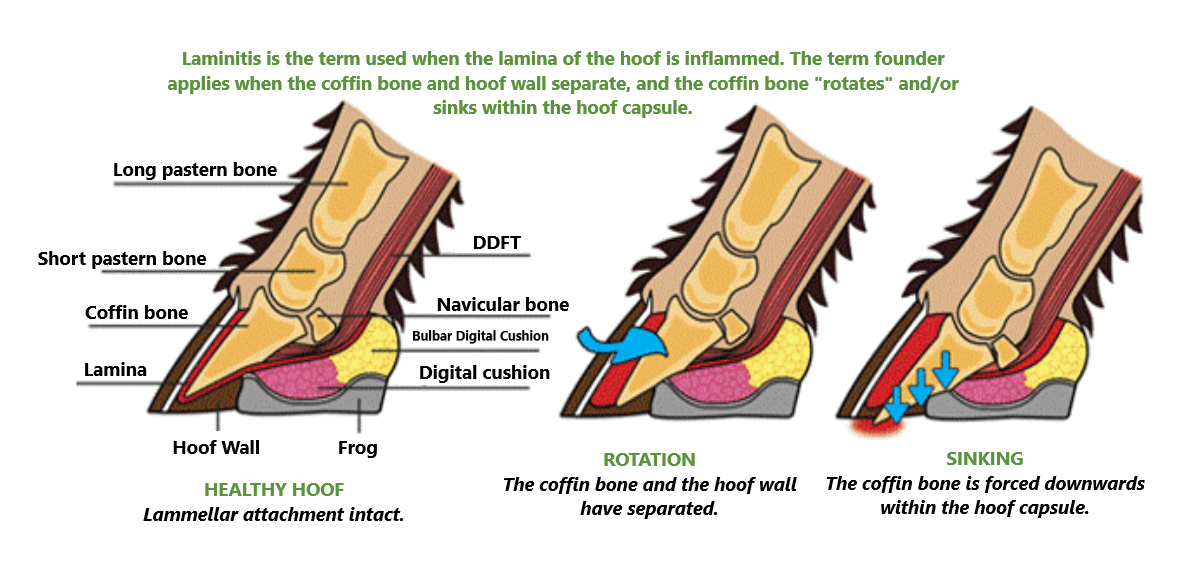
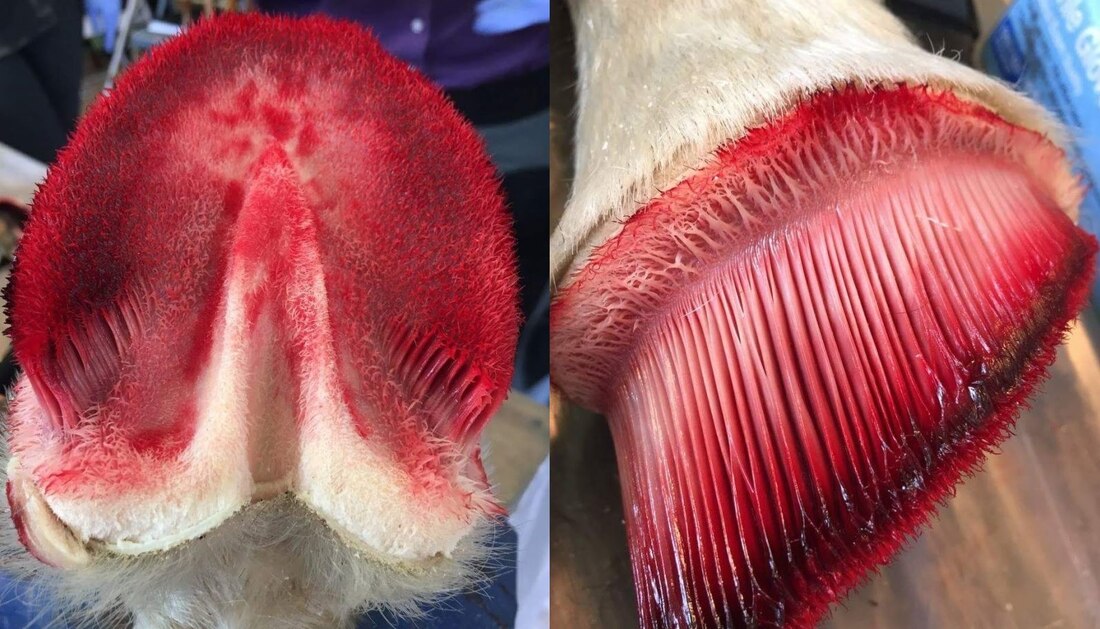
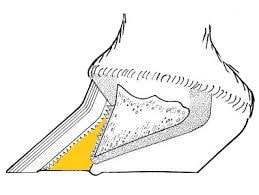
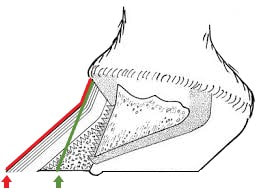
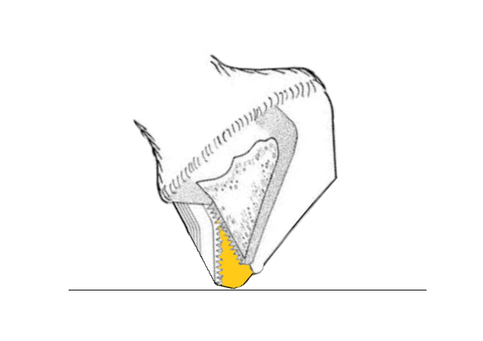
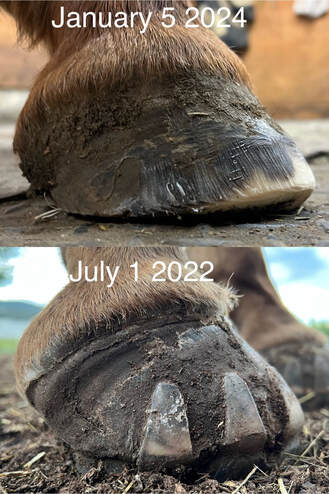
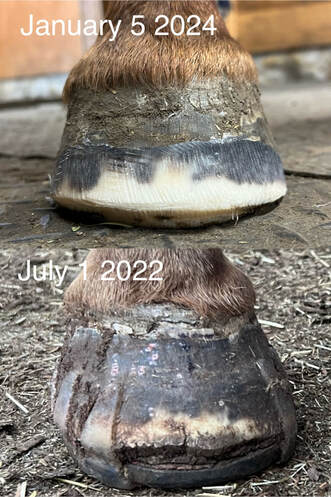
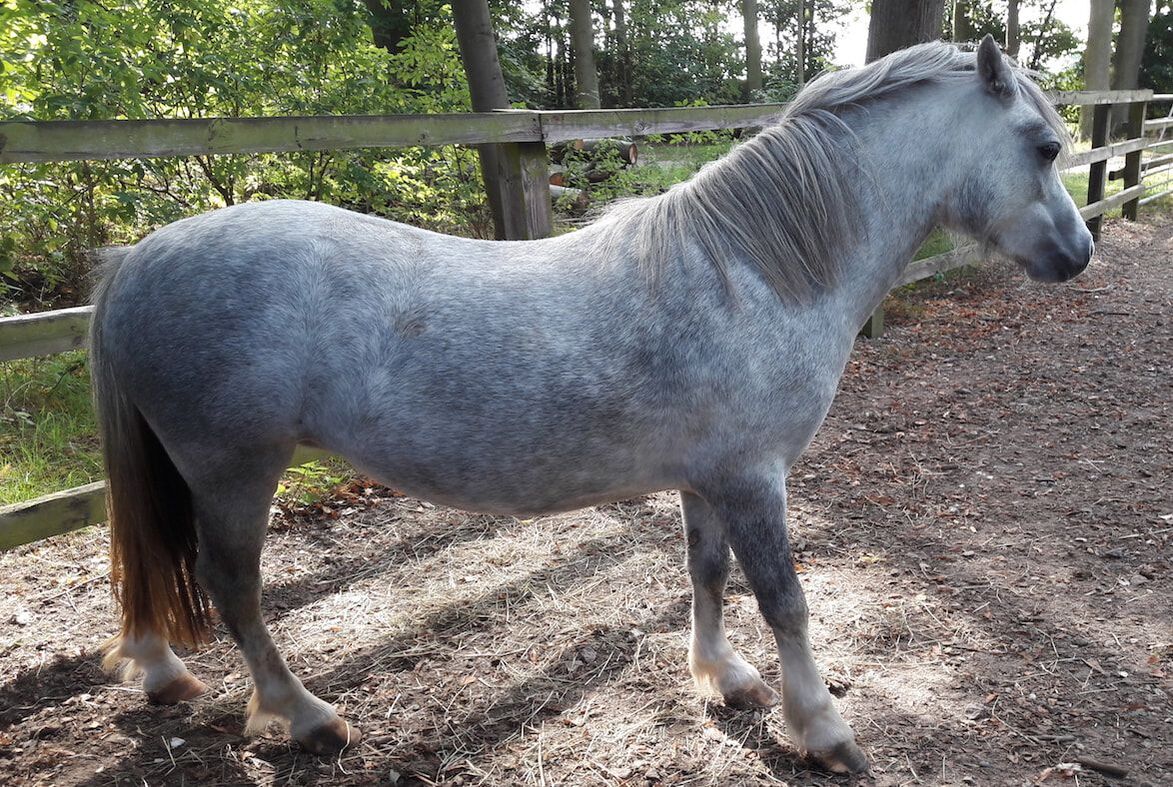
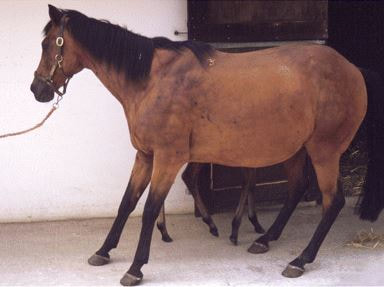
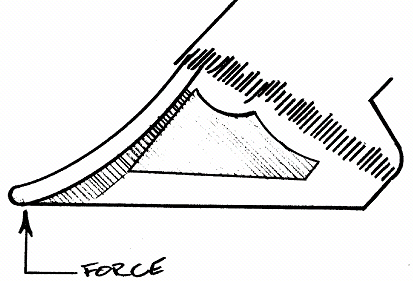
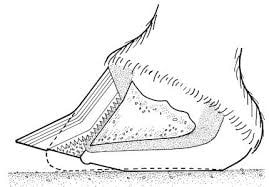
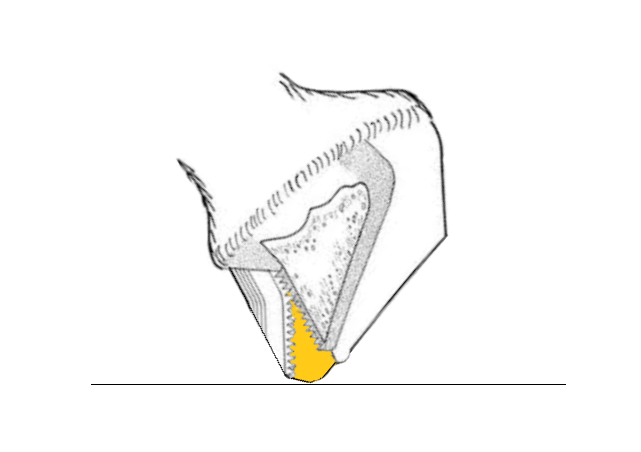
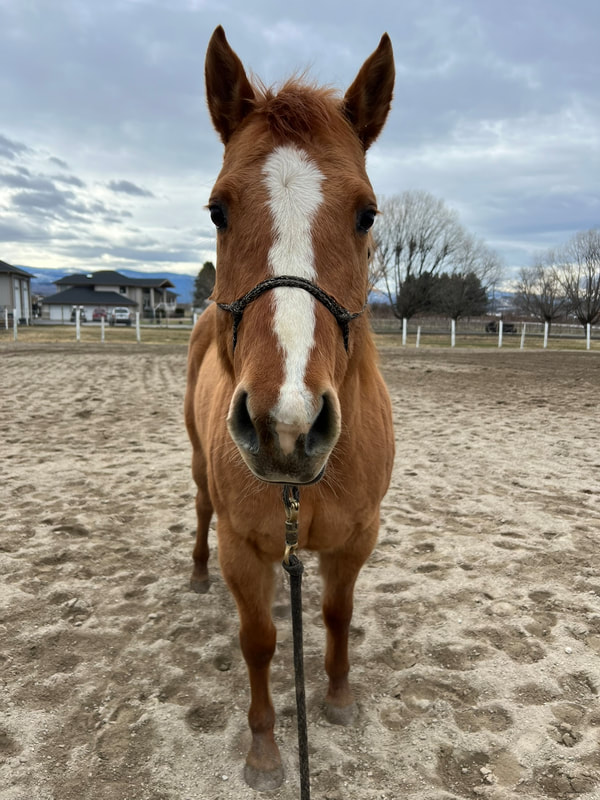
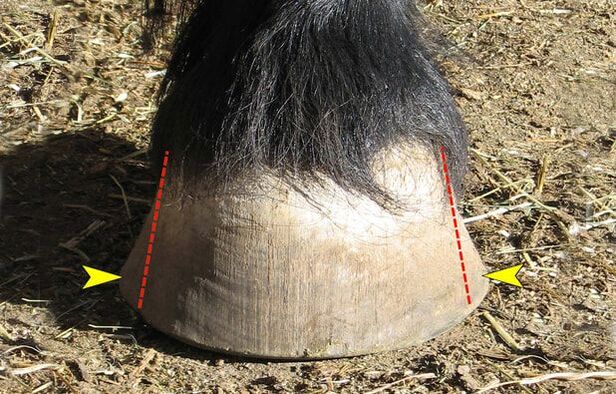
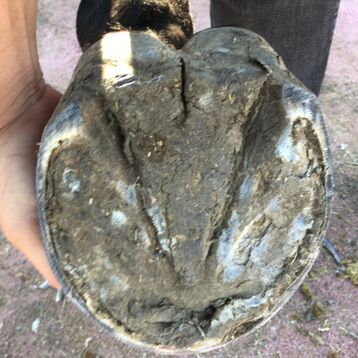
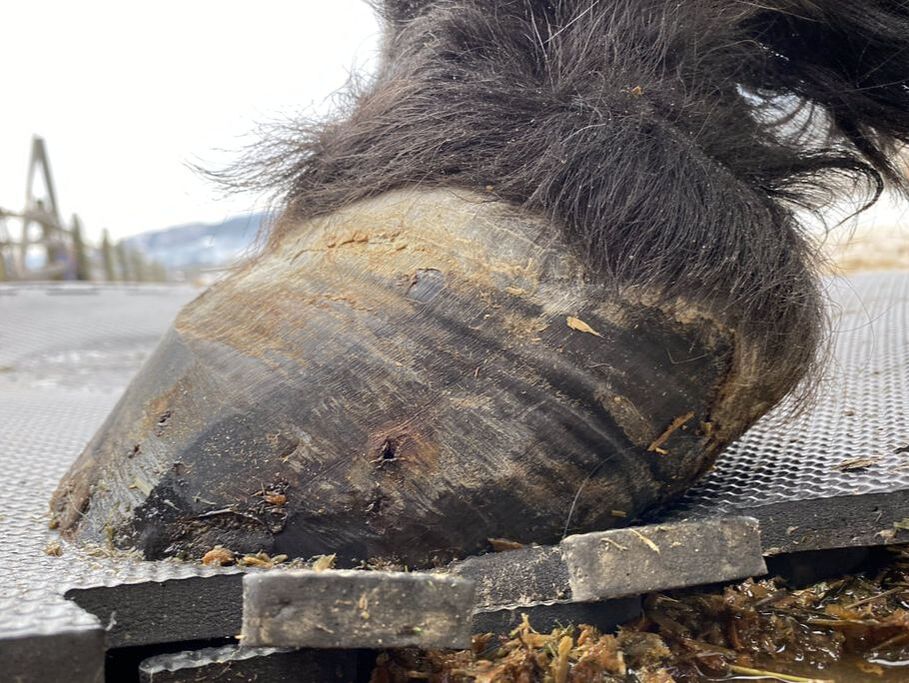
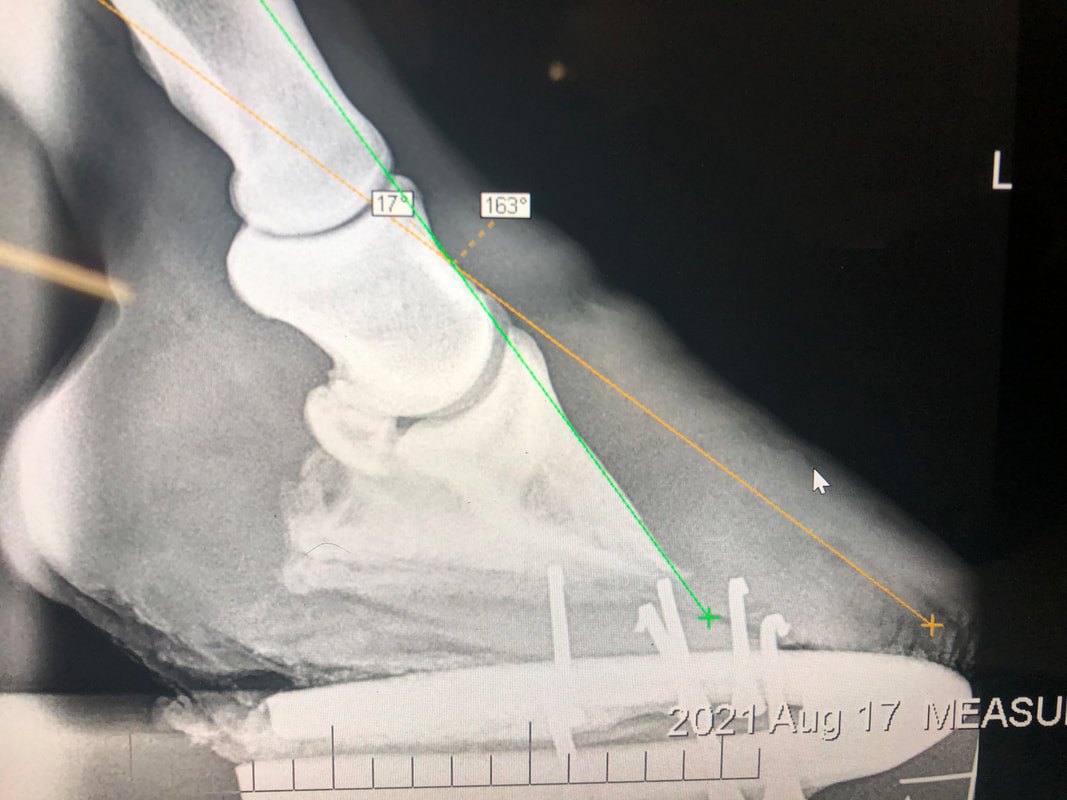
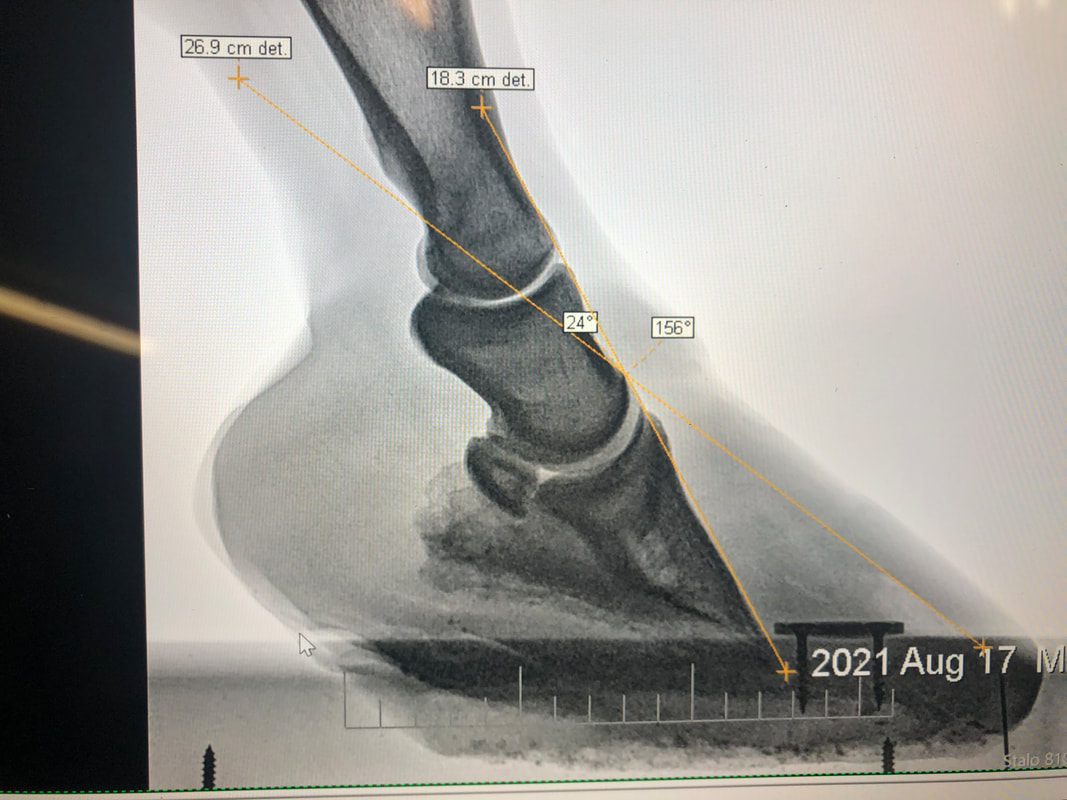

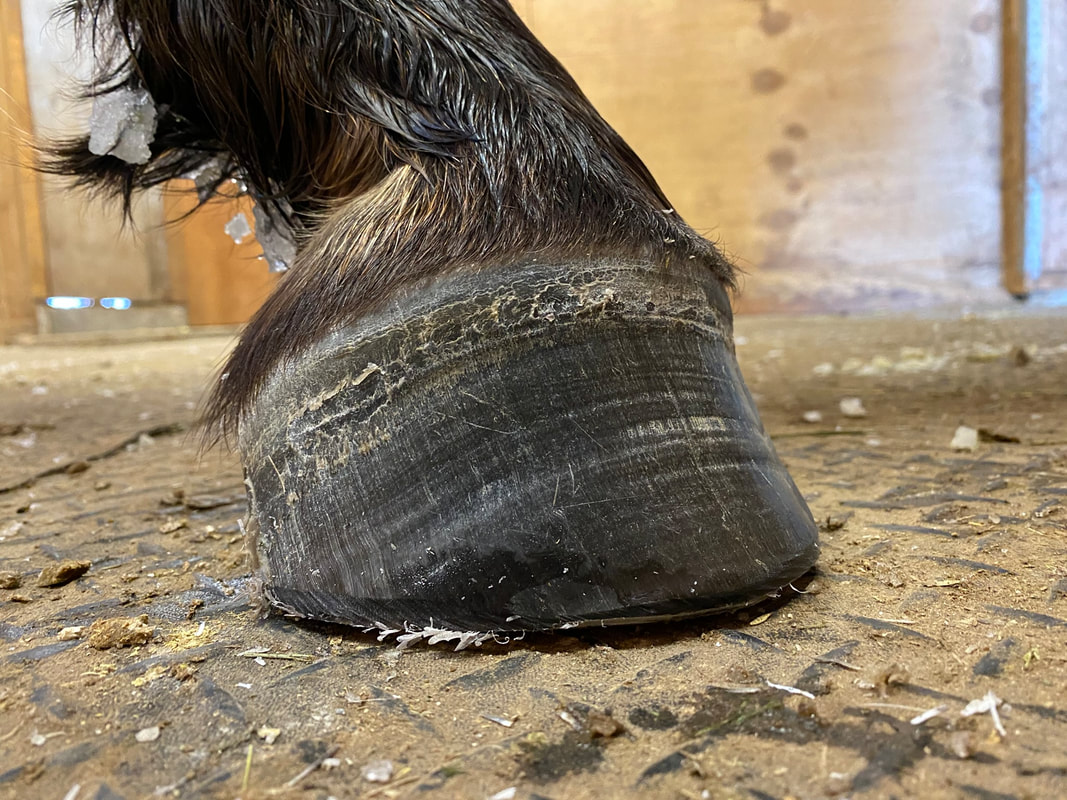
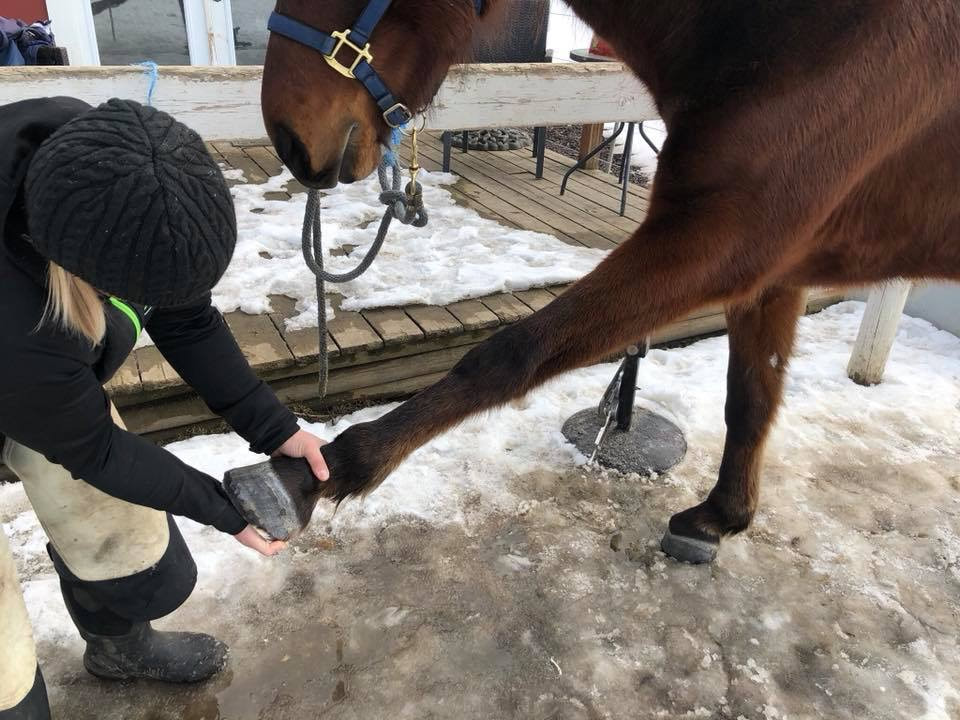
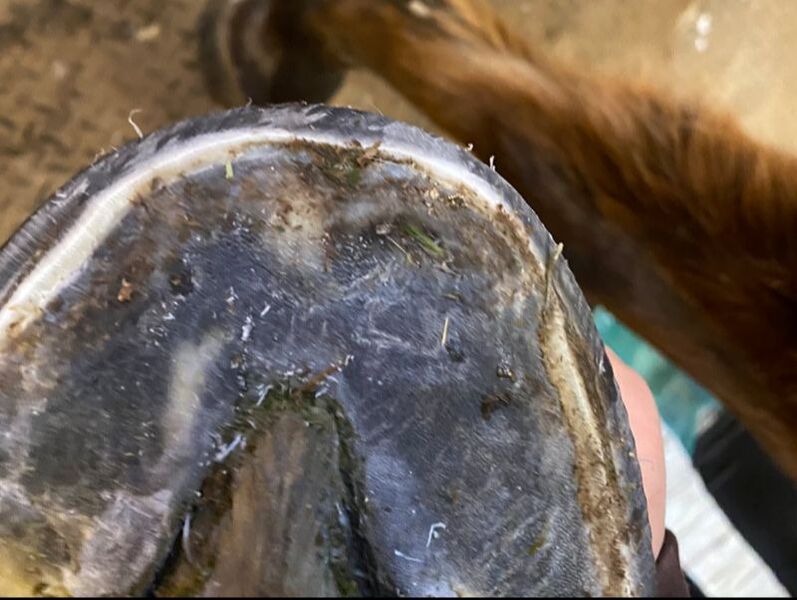
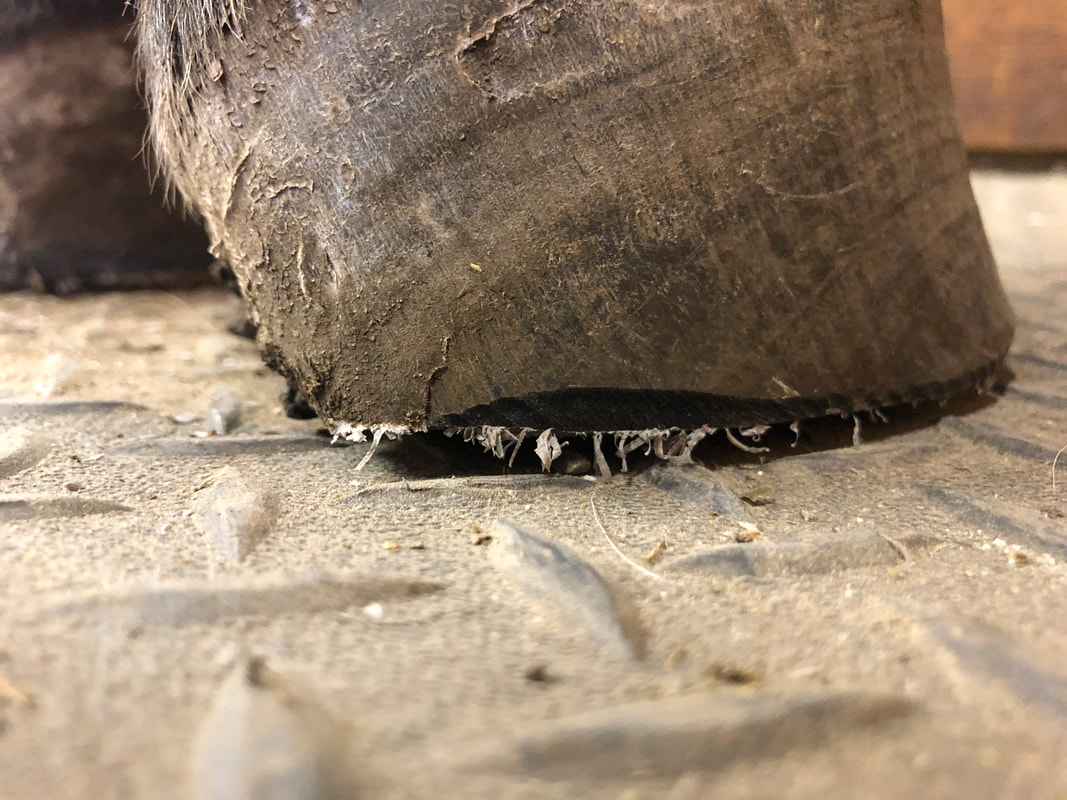

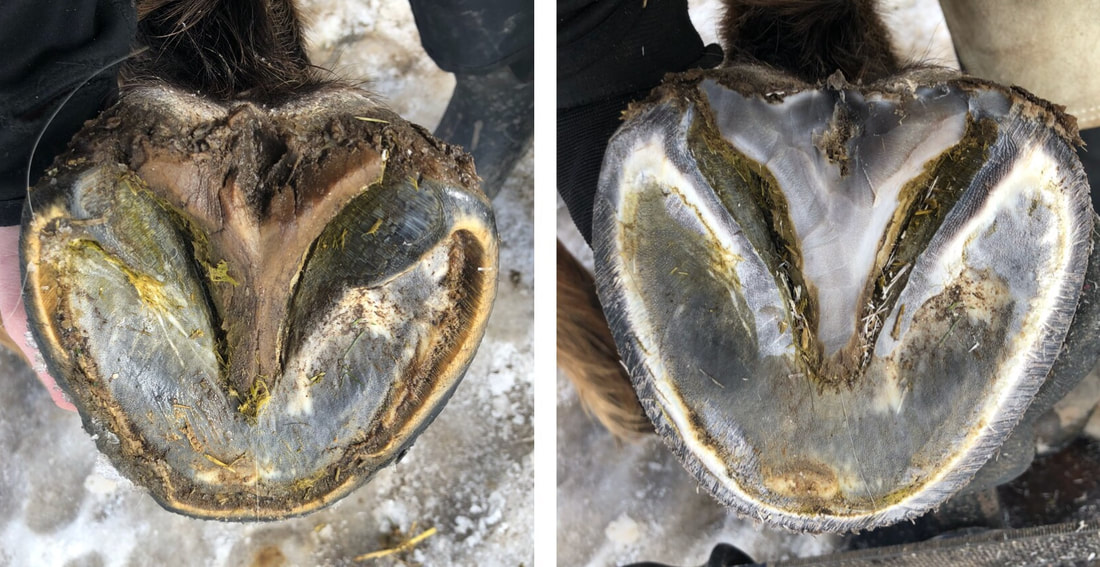
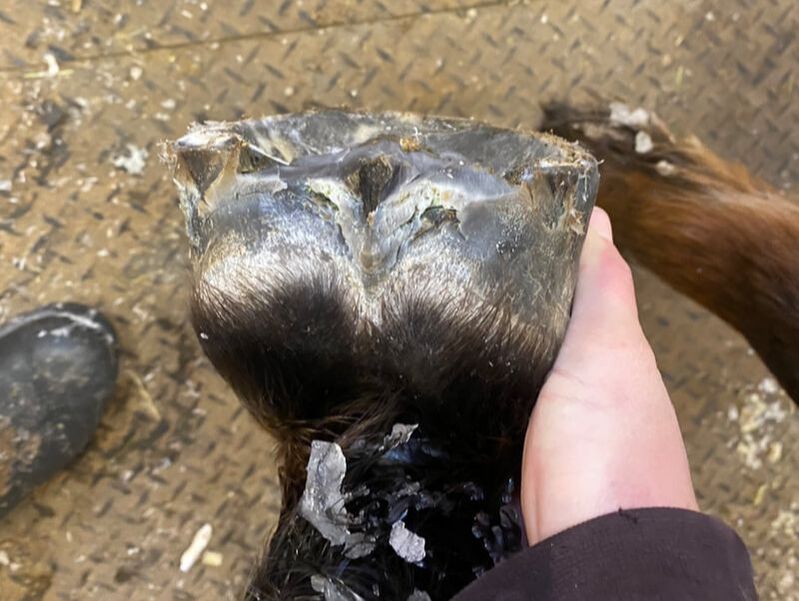
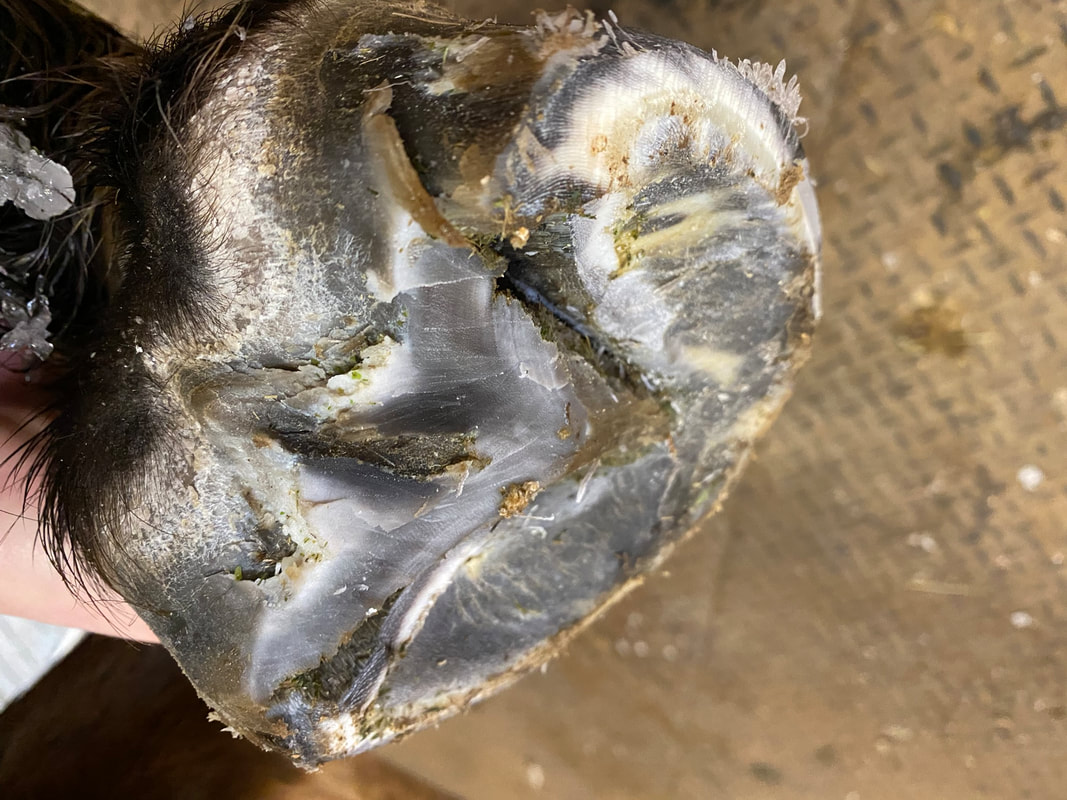

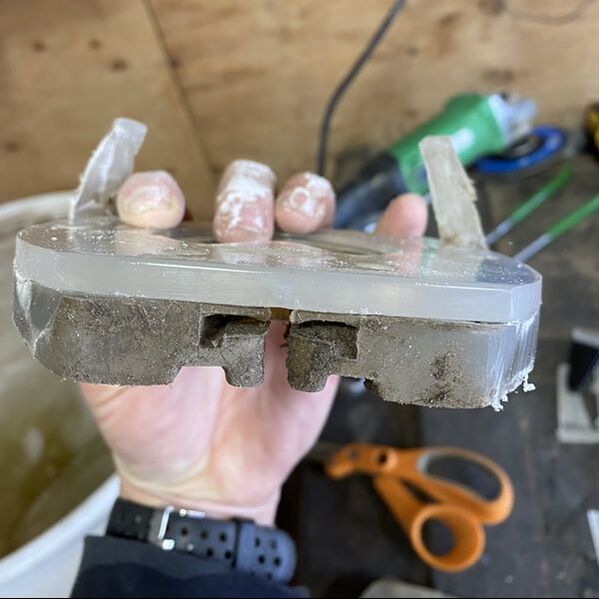

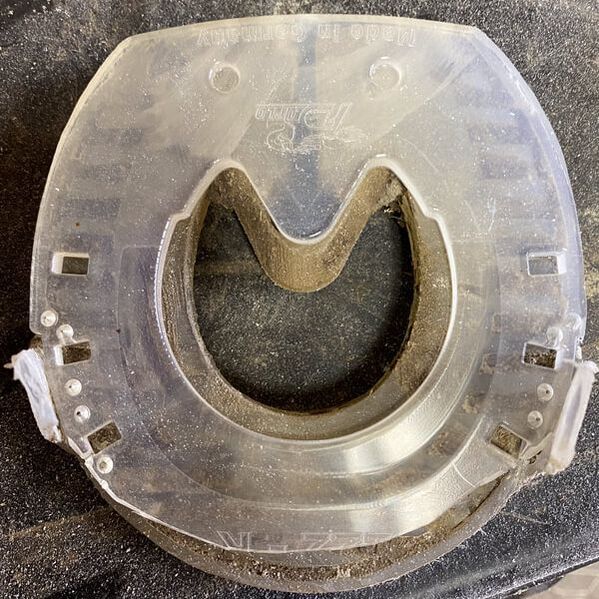
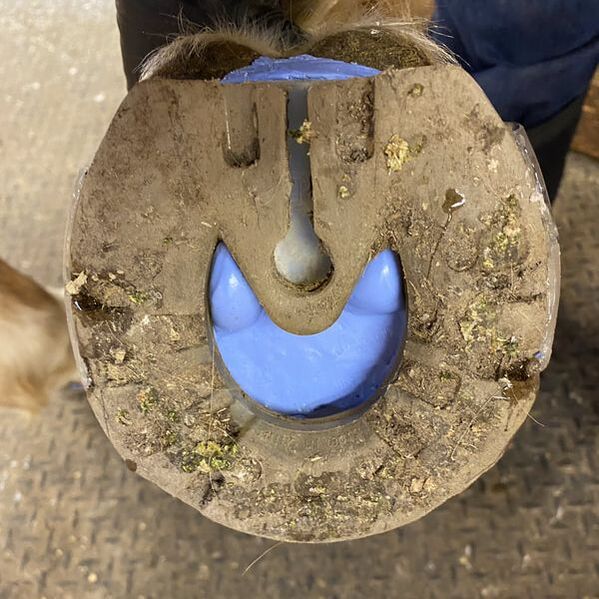
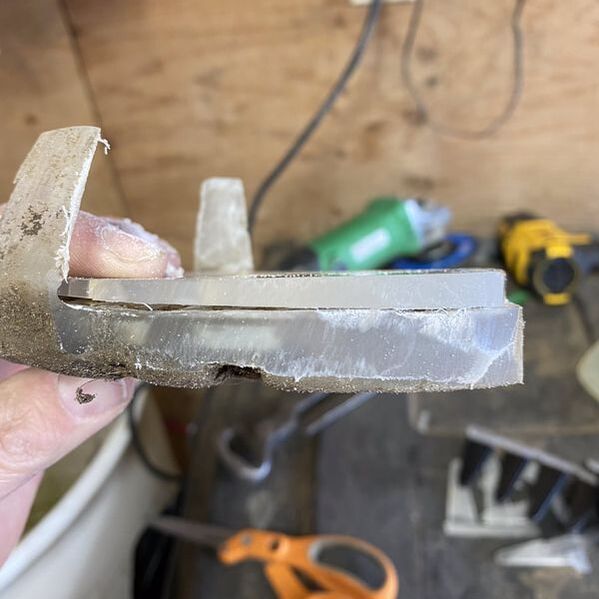
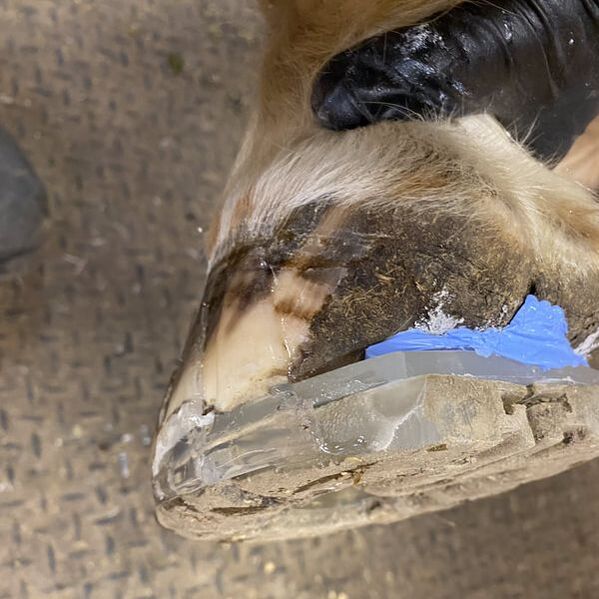


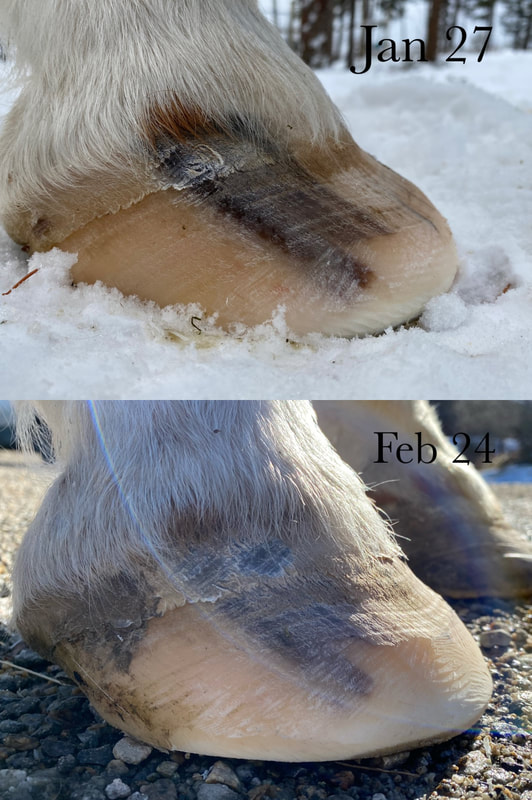


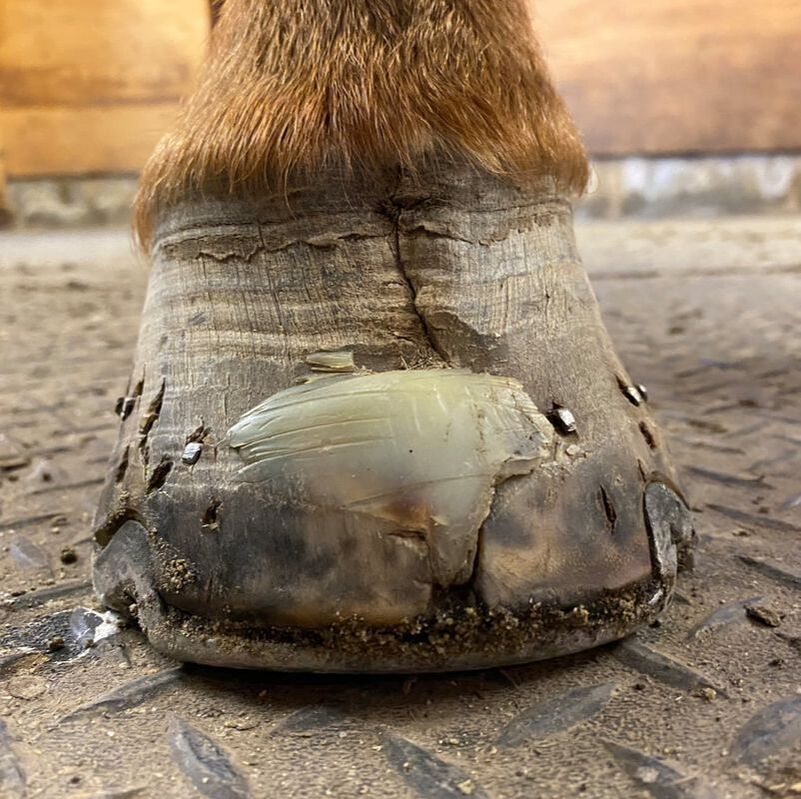
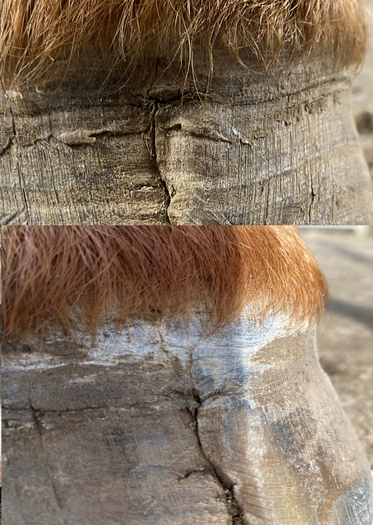
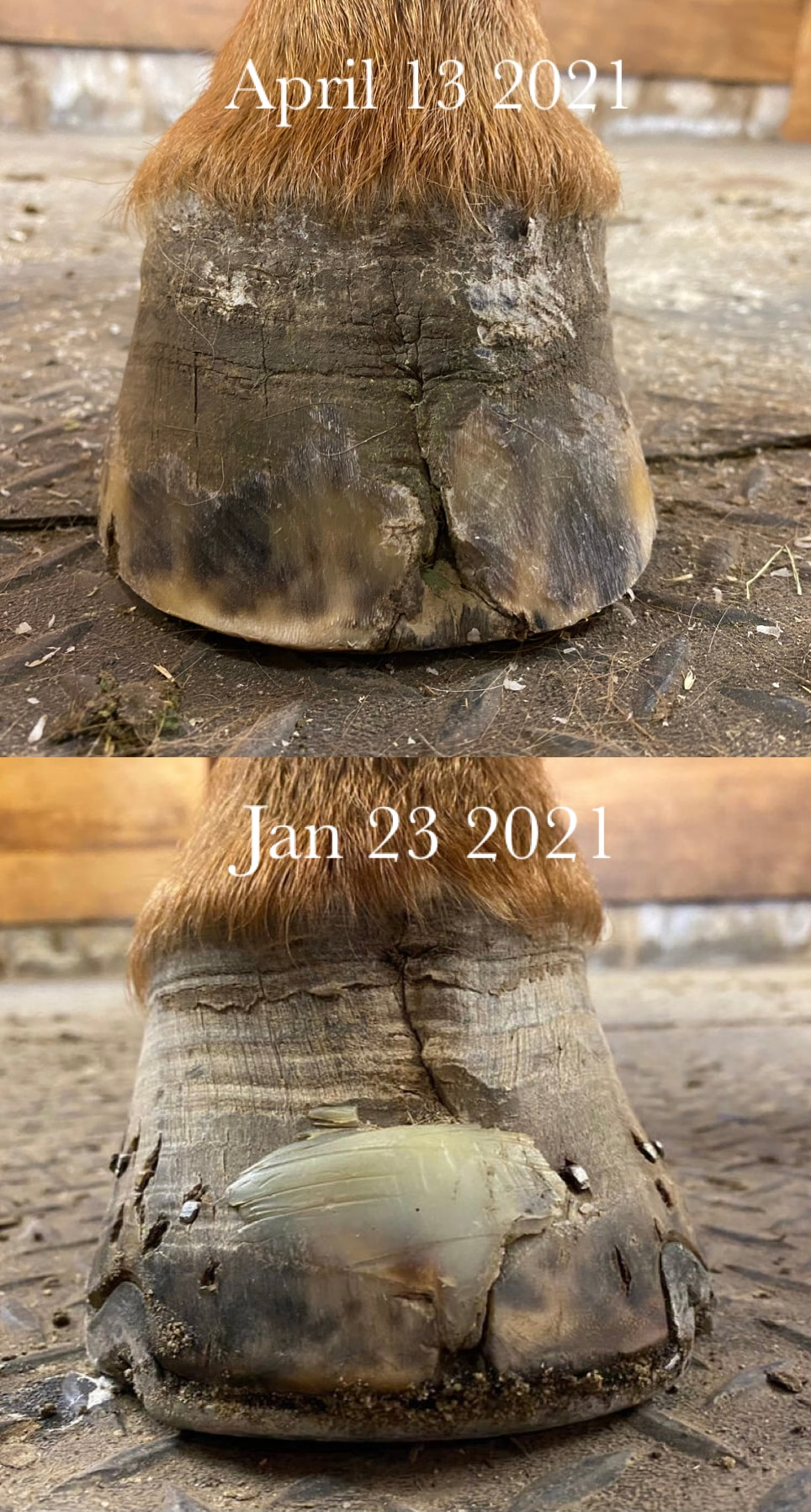
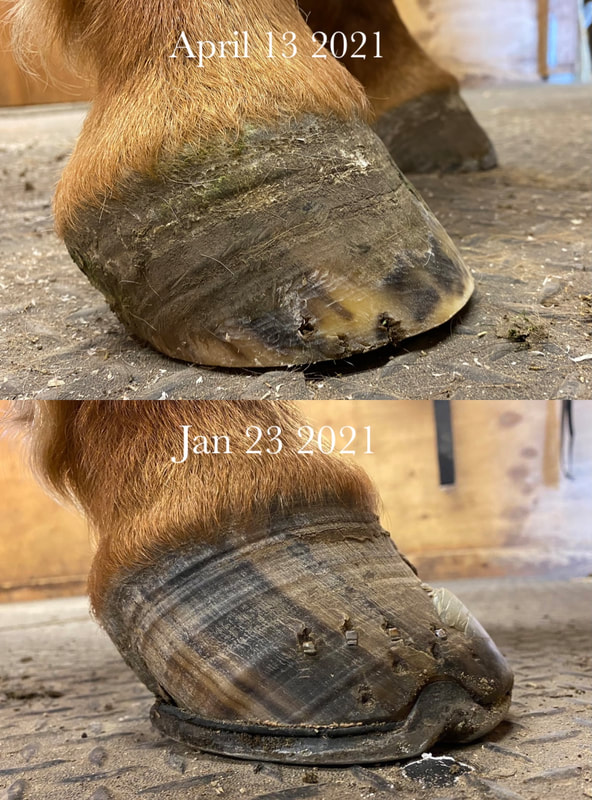
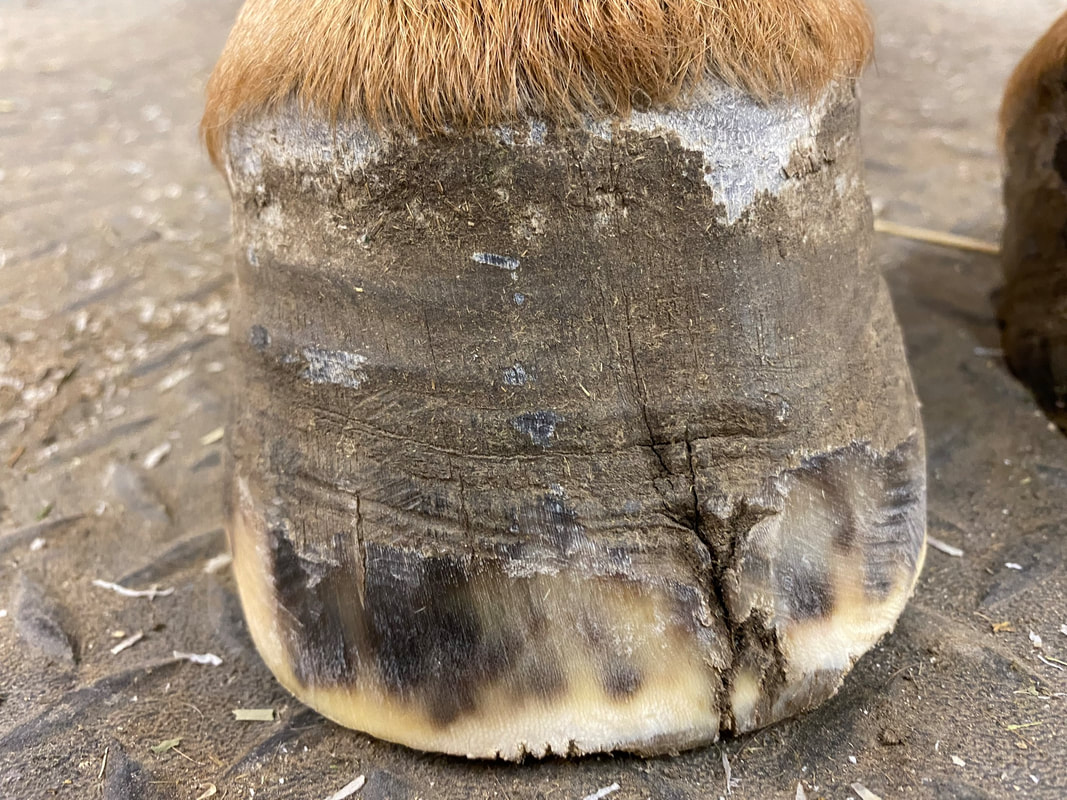
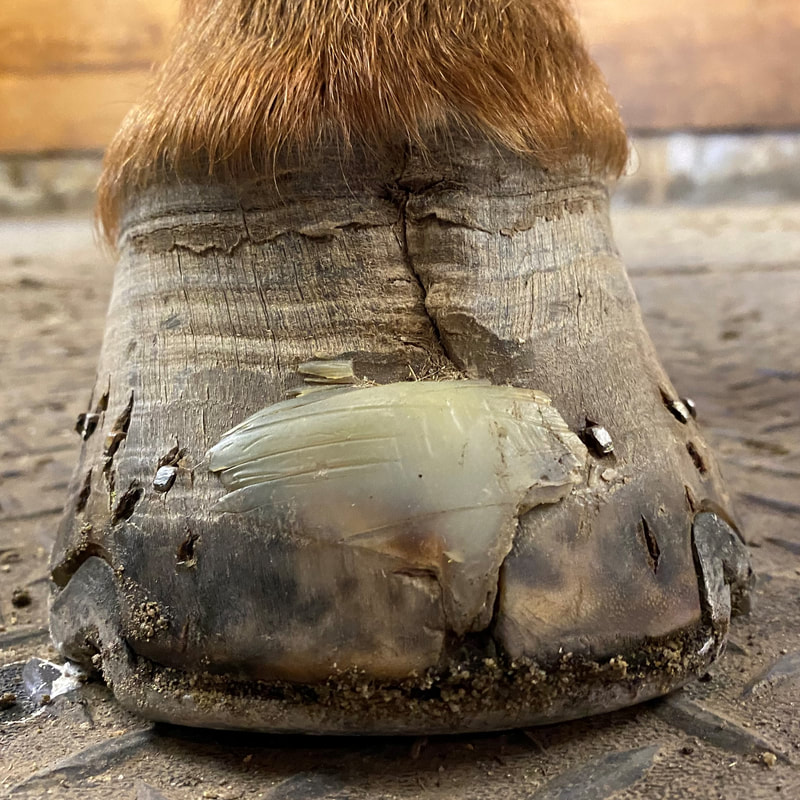
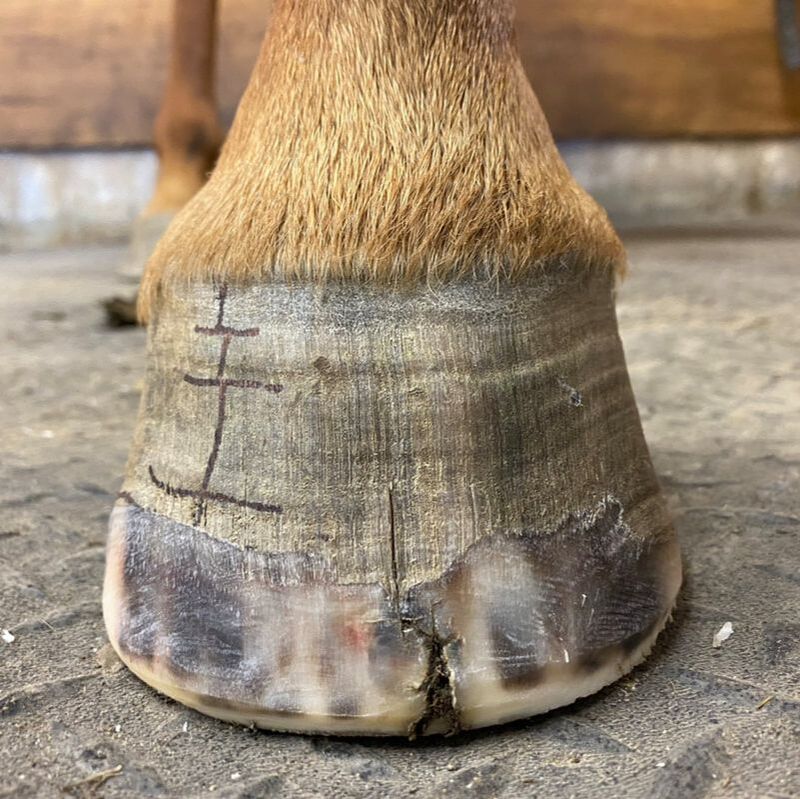

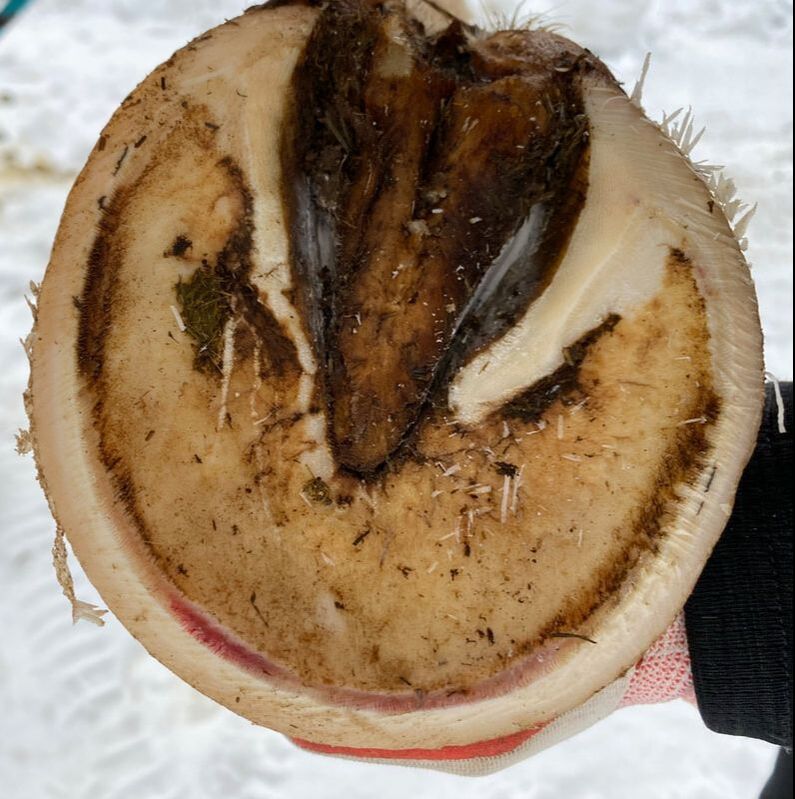

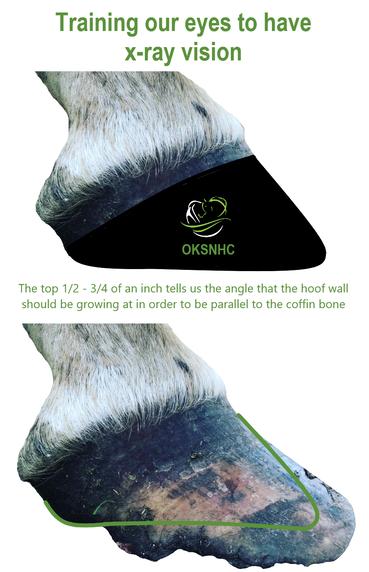
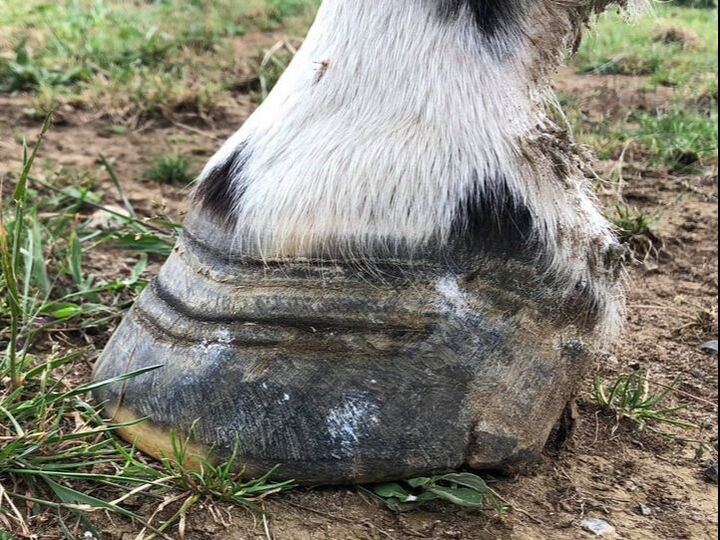
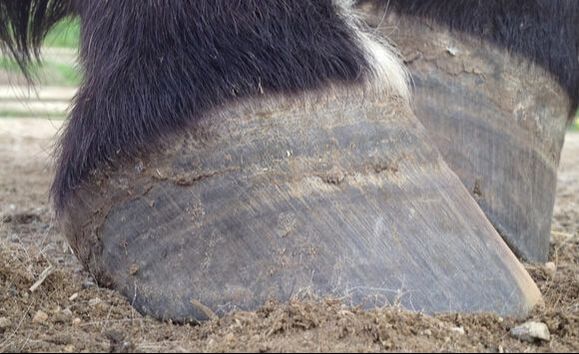
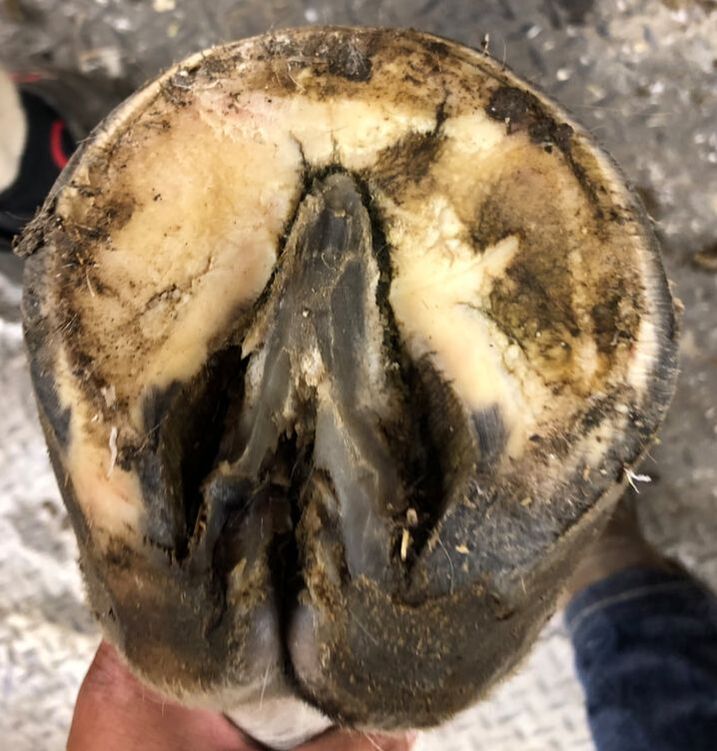
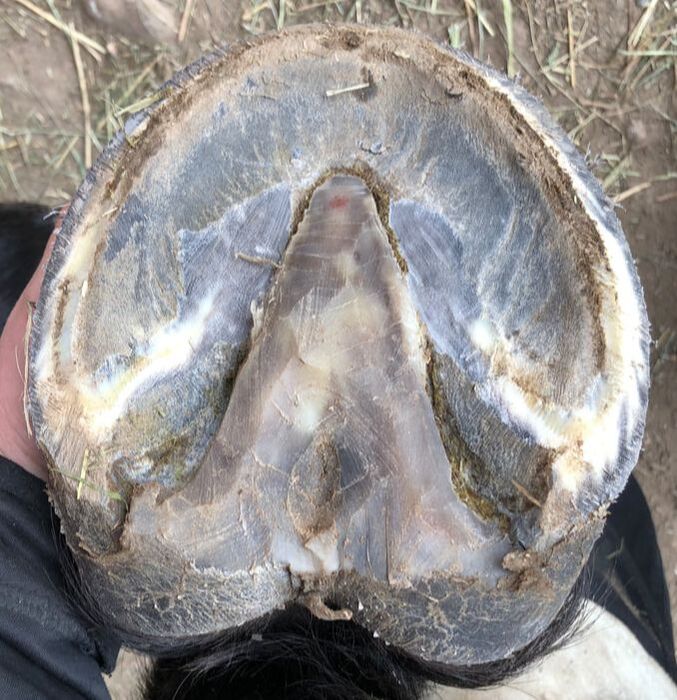
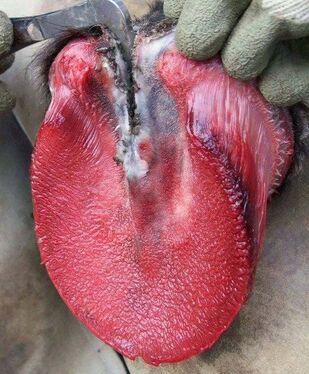
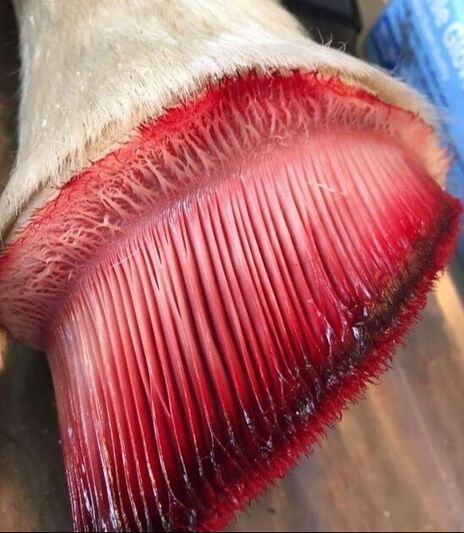
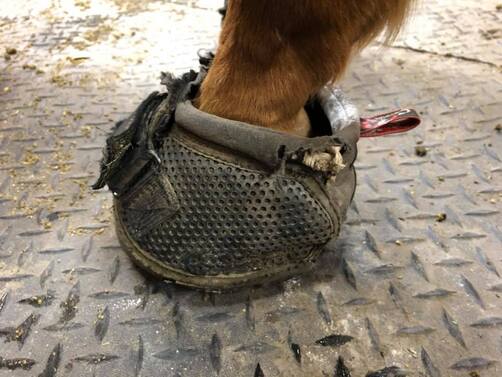
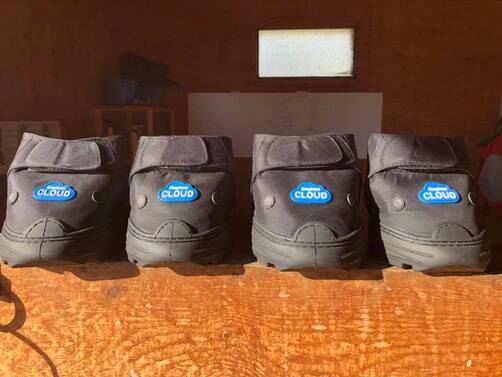
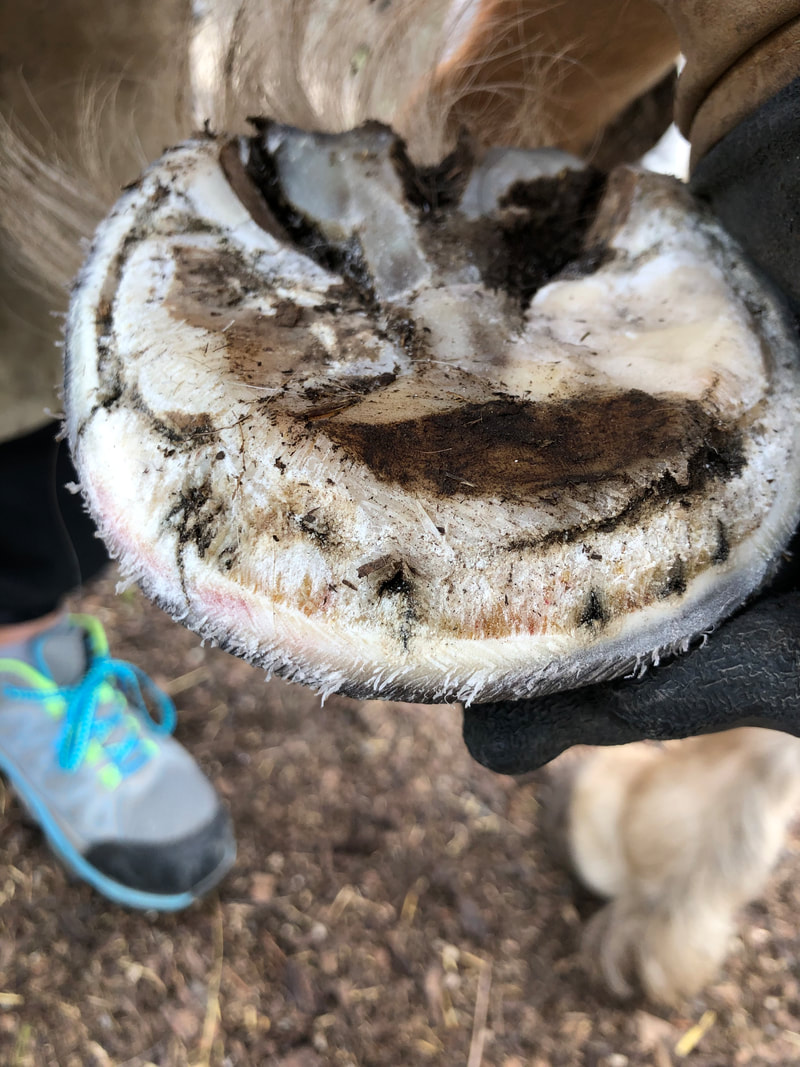
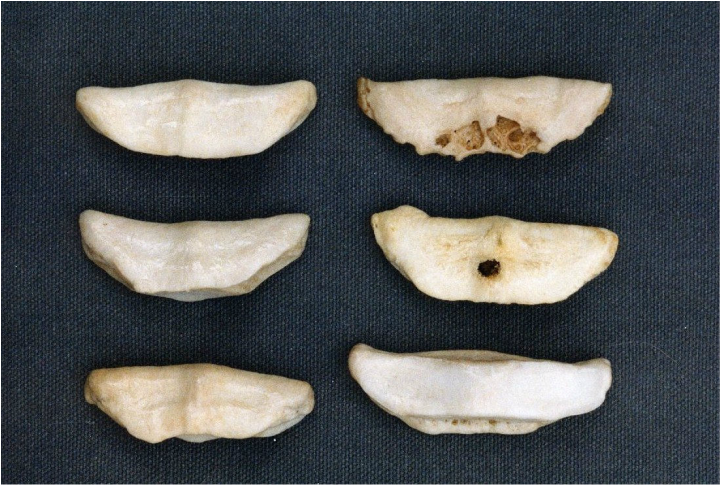
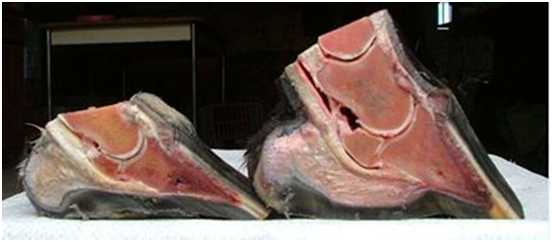
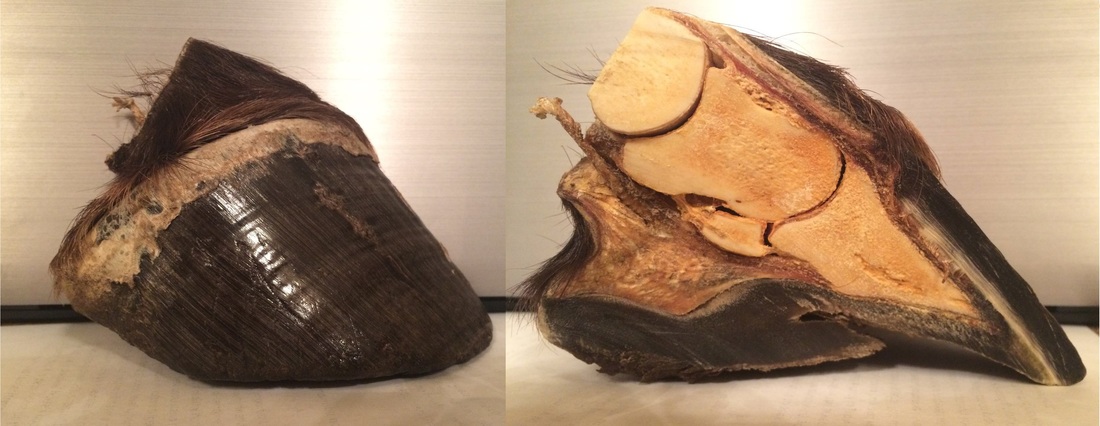
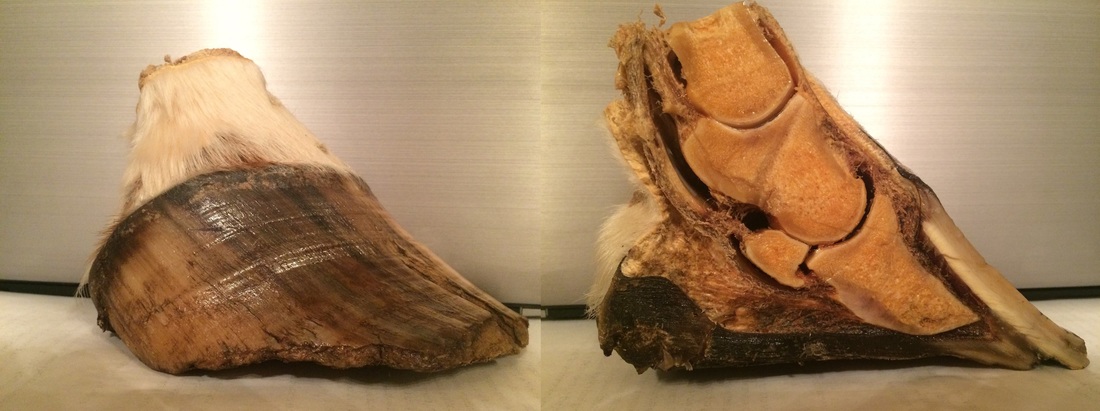

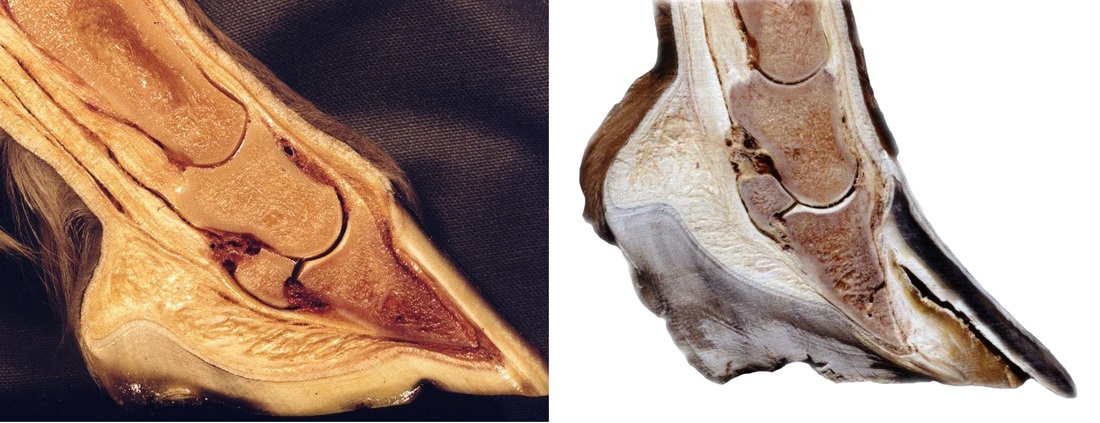
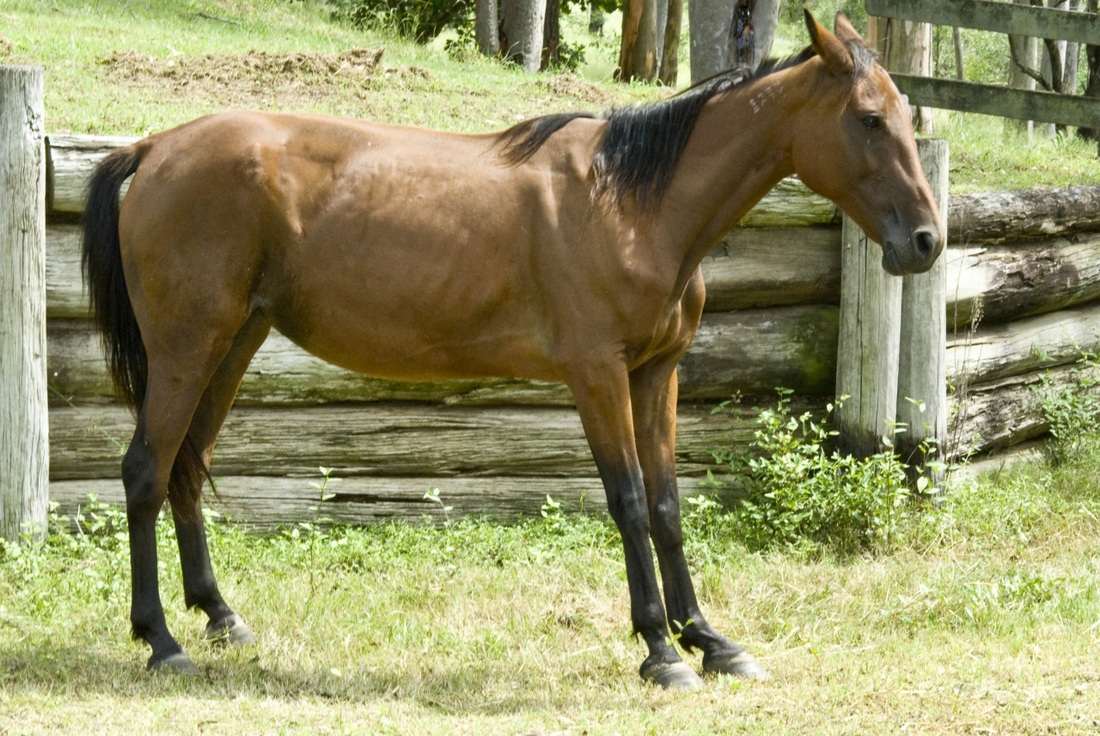
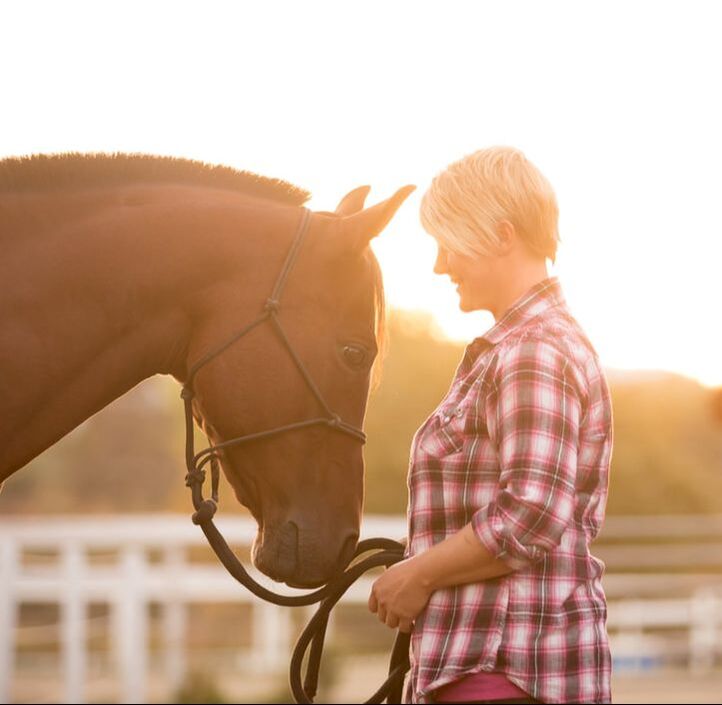
 RSS Feed
RSS Feed
